- The Inventory

Support Quartz
Fund next-gen business journalism with $10 a month
Free Newsletters
Can art make us better problem solvers?
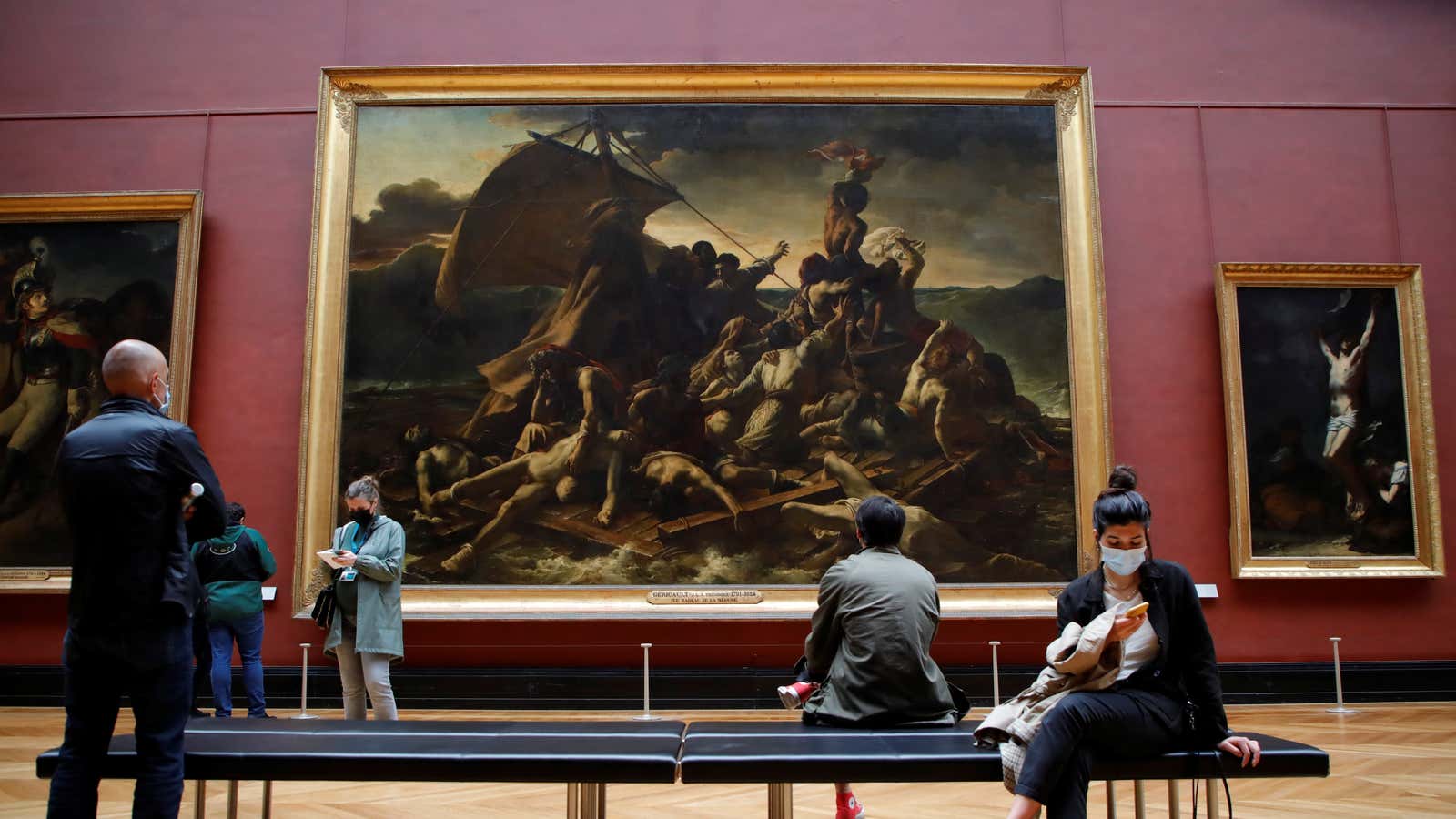
In the search for novel ways to hone our problem-solving skills , spending time with a work of art may be the simplest and most effective training, according to the art historian Amy Herman.
Herman has been teaching professionals —homicide detectives, medical students, lawyers, and engineers—to read paintings as a way to improve their analytical faculties. “Art provides a safe space outside of ourselves to analyze our observations and convert those observable details into actionable knowledge,” Herman writes in the introduction to her new book, Fixed. How to Perfect the Fine Art of Problem-Solving .
Doing so can help us understand how and why things go wrong and, more importantly, how to fix them, she explains.
Putting the lesson into practice
In her book, Herman explains how to navigate a complex composition, step by step.
Consider Théodore Géricault’s grisly painting, The Raft of the Medusa .

Herman writes:
Take in its scope, notice its details, count things, catalog what you think might be going on. Then, take a breath and let your mind wander. What did the chaos of the preceding scene bring to mind? A natural disaster? A human-made catastrophe? The current state of your country? Maybe you were reminded of more personal scenarios: office drama, an argument at home that got out of hand, Zoom Thanksgiving.
No matter who you are or where you live, chances are you can relate to the desperation depicted above.
A crucial skill in Herman’s approach is the art of noticing—the ability to quell the impulse to pick up our mobile devices and to pause long enough to ruminate on the details of a visual spectacle before us. This is particularly salient in the age of short attention spans , where the average museum-goer spends less than 30 seconds looking at a work of art .

Looking at art also attunes us to nuance and ambiguity, explains Herman. It’s a skill that’s critical for hostage negotiators to managers trying to read the room.
“The optimal way to look at art, whether alone or with others, is to look at the object first, speak after looking, and only then, read the label,” Herman tells Quartz. “My hope is that by learning to look at art in a structured way inspires and refreshes critical inquiry and that same model will be applied to when confronting problems in need of solutions.”
Herman, who once led the education department at the Frick Collection in New York City, insists that there’s no shame in “using art to study ourselves and the problems we face every single day.” “Art can be many different things to many different viewers,” she argues. “If the power of a work of art can be channeled to enable a viewer who does not have a background in art or art history to approach their vocation in a different and more expansive way, why not unleash that?”
Quartz at Work is available as a newsletter. Click here to get The Memo delivered directly to your inbox.
📬 Sign up for the Daily Brief
Our free, fast, and fun briefing on the global economy, delivered every weekday morning.
- Data Analytics
- Data-Visualisation
- Certified Information Security (CISM) / CISSP / CISA
- Cisco-(CCNP)
- Google Cloud
- Microsoft Azure
- Product Management
- Web Development
- Java Script
- Strategic Thinking
- Time Management
- Working from Home
- Entrepreneurship
- Interpersonal Communication
- Personal Branding
- Graphic Design
- UX/UI Design
- Motion Graphics
- Film & Video
- Copy Writing
- Life Coaching
- Team Building
- All Articles
- Data Science
- IT/Cloud Certifications
- Online Teaching
- Programming
- Soft Skills
Stay in touch!
Never miss out on the latest articles and get sneak peeks of our favorite classes.
September 4, 2023
How Drawing Unlocks Creativity and Problem-Solving
Drawing is a universal form of expression that transcends language barriers and taps into the innate human desire to communicate visually. Beyond its artistic allure, drawing possesses a remarkable ability to enhance problem-solving skills and unleash creativity. The act of problem solving drawing by putting pencil to paper isn’t just reserved for artists; it’s a cognitive tool that can spark innovation and lead to novel solutions.
In this article, we will explore how drawing contributes to problem-solving and the ways in which it can be harnessed as a powerful thinking tool.
Table of contents:
How does drawing improve problem-solving skills , what is a problem-solving chart , how do you draw a problem-solving diagram , additional benefits of drawing , do you have to be an artist to draw , drawing exercises to enhance creativity for beginners , conclusion .
Drawing is a unique medium that engages both hemispheres of the brain, facilitating holistic thinking.
When faced with complex problems, the act of problem solving drawing forces you to externalize your thoughts and visually map out connections, making abstract concepts more tangible. This visual representation often reveals patterns, relationships, and gaps that might not be as evident through traditional verbal or text-based approaches.
Problem solving drawing enables you to approach challenges from a fresh perspective, breaking down barriers that hinder innovative thinking. ‘
You might also like: 151 Drawing Ideas with Examples for Inspiration
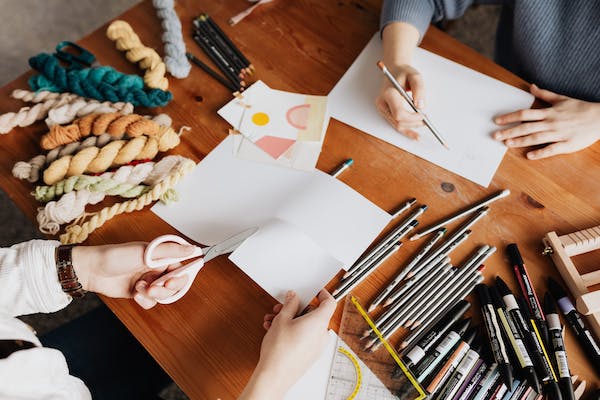
A problem-solving chart is a visual framework that organizes information and ideas related to a specific problem or challenge. It can take various forms, such as flowcharts, mind maps , or concept diagrams.
These charts serve as dynamic tools to capture and analyze the various elements of a problem, providing a clear overview and aiding in identifying potential solutions.
The process of creating a problem-solving chart encourages structured thinking and encourages you to explore different angles of a problem.
Basics of drawing and sketching for beginners
Drawing for Beginners
The Art of Public Speaking
When faced with complex problems, the act of problem solving drawing forces you to externalize your thoughts
Using problem solving drawing to create a diagram involves several steps:
- Define the Problem: Clearly articulate the problem you’re trying to solve. This will serve as the central focus of your diagram. Gather Information: Collect relevant data, ideas, and concepts related to the problem. Jot down keywords, phrases, and concepts that come to mind.
- Choose a Format: Depending on the complexity of the problem, choose a suitable format for your diagram. Mind maps are great for brainstorming, while flowcharts can illustrate processes and decision trees.
- Organize the Information: Begin placing the collected information in the diagram. Connect related ideas with lines or arrows, indicating relationships and dependencies.
- Analyze and Iterate: Step back and assess the diagram. Does it highlight potential solutions? Are there gaps or missing connections? Make adjustments as needed.
- Identify Solutions: Use the insights gained from the diagram to identify possible solutions. The visual representation can help you see connections that lead to innovative ideas.
Problem solving drawing offers a myriad of additional benefits. It enhances focus and concentration, allowing you to immerse yourself in the creative process.
Drawing also serves as a stress-relieving activity, providing a means to unwind and detach from the demands of everyday life.
Moreover, it boosts visual thinking skills, enabling you to grasp complex concepts and information more readily.
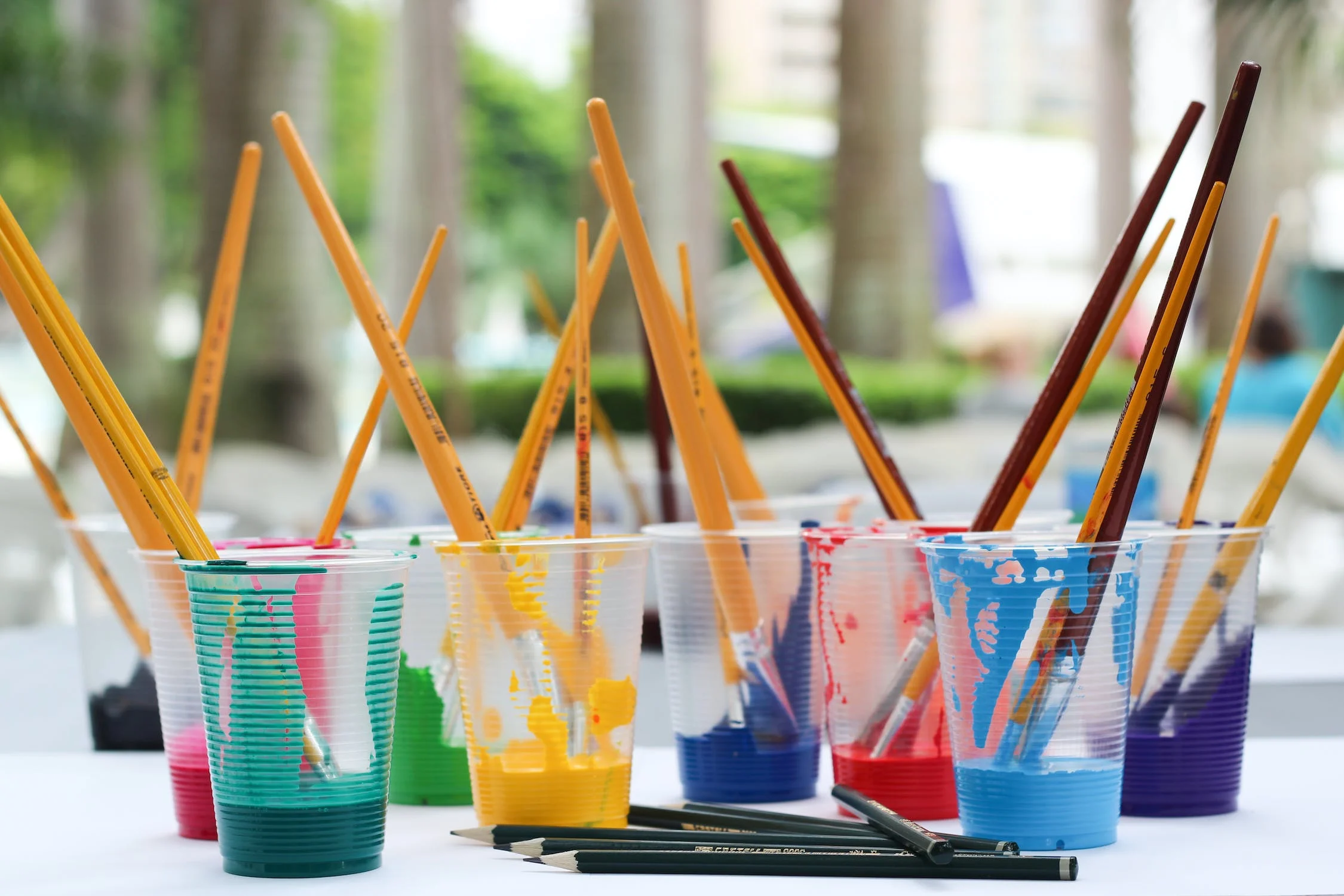
Absolutely not.
The beauty of drawing as a problem-solving tool is that it transcends artistic skill.
You don’t need to create intricate masterpieces; your goal is to externalize your thoughts and ideas visually. Simple sketches, doodles, or diagrams can effectively convey your thinking process.
The act of drawing is more about engaging with the problem and unleashing creativity than producing gallery-worthy art.
You might also like: 21 Best Drawing Courses
If you’re new to drawing but eager to enhance your creativity, there are several exercises that can help kickstart your artistic journey.
Begin with basic shape doodling.
Set aside time to doodle various shapes, lines, and patterns. This exercise not only gets your hand accustomed to the motion of drawing but also encourages your brain to think visually.
Another exercise is blind contour drawing.
Choose an object and draw it without looking at the paper. This exercise improves hand-eye coordination and forces you to observe details.
Additionally, try drawing from memory.
After studying an object or scene, put it out of sight and attempt to draw it from memory. This exercise sharpens your observation skills and encourages you to focus on essential details.
Lastly, experiment with negative space drawing .
Instead of drawing the object itself, draw the spaces around and within it. This exercise challenges your perception and helps you see objects in a new light.
By engaging in these drawing exercises regularly, you’ll not only improve your artistic skills but also ignite your creativity in various aspects of problem-solving and thinking.
Drawing isn’t solely reserved for those with an affinity for art; it’s a potent tool that can unlock creativity and enhance problem-solving skills. Problem solving drawing enables you to approach challenges from a fresh perspective, providing a visual representation of intricate ideas and connections.
As you craft problem-solving charts, you organize information, identify patterns, and explore innovative solutions. Beyond its cognitive benefits, drawing offers stress relief, improved concentration, and heightened visual thinking skills.
Embrace drawing as a thinking tool, regardless of your artistic prowess, and harness its potential to transform the way you approach problems and ignite your creative spark.
Related content:
- How To Be More Creative With Sketching
- 7 online painting classes
- drawing for beginners: Learn to draw online
- 21 Drawing Supplies and Tools Essentials
Trending Articles
Don't forget to share this article!
The largest marketplace for live classes, connecting and enriching humanity through knowledge.
Related Articles
Digital Advertising: Navigating the Future of Marketing
Astronomy vs Astrology: Know the Difference
Unlocking the Potential of BlackRock Bitcoin ETF: A Comprehensive Guide
Hot Gift Card Deals 2024
How Sour Candy Can Help Calm Anxiety
How Many 5 Letter Words are There in the English Language

Using Visual Arts to Foster Creative Thinking Skills
“A drawing is the three-way relationship between substance, surface and body. It activates the relationships between the eye and the hand, the hand and the tool, the body and the drawing surface. The elements of the drawing itself, the drawing marks on the empty page and between the eye of the artist and what lies beyond what the artist can actually touch.” Amy Sillman
“ I am not creative ” – “ I can’t draw !”, are the most common reactions I encounter when people learn that I’m working as an artist. Regrettably, the main focus of art production appears to revolve around a “beautiful outcome”, the ability to draw or paint a stunning picture. You are either good or not and if you aren’t, why carry on?
This misconception results in the profound benefits of engaging with the visual arts on your emotional health, the fostering of creative thinking skills, and art as a tool to strengthen psychological resilience being mostly overlooked.
Both art appreciation and the actual creating of visual arts can have a significant impact on the development of a young person. In fact, your brain will benefit from engaging with art at any stage of your life and you neither have to be a good artist nor know a lot about art to reap the rewards from experiencing it.
“Creativity requires the courage to let go of certainties” – Erich Fromm
Creativity requires strong self-believe, the ability to persevere despite failure and setbacks, it’s about following an idea, an intuition, it requires untiring curiosity. Carrying on, despite of what other people might say or of what your peers might say. It’s about seeing information in a different light, putting unrelated elements together, noticing patterns, inconsistencies, using everyday experiences, getting inspired by anything and everything and the need to try things in a different way over and over again.
Although, you might have an end goal in view, the creative path won’t be linear and can’t always be planned out from start to finish. There isn’t one correct answer, more of an open-ended answer to an open-ended problem. Being creative involves failing a lot, failure is indeed not a bad outcome, failure makes you look at all the pieces in a new light, it requires you to look at them differently, you need to find a new way of solving your answers and posing your questions.
In line with an easy to follow universal marking and evaluation system, most school settings teach children to deal with problem solving in a specific way, including the need to follow certain steps and leading to one correct answer. As Dr. Zorana Ivcevic Pringle, a research scientist at Yale Centre for Emotional Intelligence, explains, “ If a task poses a question with a specific set of steps required to answer it, there is no space for creativity. ”
Another stumbling block in acquiring creative thinking skills is “creative mortification”, a term used by psychologist Ron Beghetto, describing an unwillingness or outright refusal to participate in any creative work after having experienced negative feedback on your work, and lacking the ability to deal with the resulting negative emotions felt. This usually happens to children at a very young age, when they find it more difficult to regulate their emotions and don’t yet have the necessary resilience to deal with this negative experience.
In my opinion, a young person losing faith in their artistic creativity early on, will very likely refrain from using the arts as a tool for acquiring creative thinking skills. As a result, they might be less likely to explore their own ideas in other non-art related areas, as their motivation for exploring creative thinking has been discouraged at an early age.
There are individuals, who from the outset have a highly creative mind, a talent or inborn creativity, which makes them explore the world in a different and more creative way. Being creative is part of who they are, their very essence. Studies researching the connection between attention and creativity have brought to light that truly creative individuals appear to have a “diffused or “leaky attention”, which translates into their having great difficulties in filtering out external sensory stimuli whilst trying to carry out cognitive tasks. In contrast, individuals with lower creative talent are able to block out distractions from their environment and give full attention to the task at hand.
Although having a “leaky attention” would be a real disadvantage in particular exam situations, it nevertheless leads to creative individuals being able to notice more in their environment and doing so on a continuous basis. They will notice things most people overlook; therefore, the creative mind has more information to play with and furthermore the ability to create new and unusual connections between various seemingly unrelated chunks of information.
The creative brain has the ability to better regulate thoughts and behaviours whilst being involved in a creative task, getting into a state of flow and in this setting tuning out all distractions. The psychologist Mihaly Csikszentmihalyi described flow as “ being completely involved in an activity for its own sake. The ego falls away. Time flies. Every action, movement, and thought follows inevitably from the previous one, like playing jazz. Your whole being is involved, and you’re using your skills to the utmost. ”
In addition, creatives tend to be better equipped at managing their emotions, especially with regards to negative feedback, and are able to just carry on with their vision. They have a higher level of resilience when faced with obstacles; these obstacles often leading them to be even more creative.
What Happens in Your Brain When You are Drawing?
In a study conducted to investigate whether drawing could increase the brain’s plasticity and using fMRI (Functional Magnetic Resonance Imaging) scans to establish what is going on in the brain, Dr Lora Likova, worked with a cohort of congenitally blind individuals, who had been taught to explore raised line tactile images with the help of their fingers and learnt for a week to draw from memory.
Congenitally blind people don’t show any activation in the visual area of their brain, however those participants who had learned to draw from memory showed a “dramatic enhancement of the activation, very specific to the primary visual cortex or what would have been the primary visual cortex in these congenitally blind subjects. ” Dr Likova’s study shows a rather remarkable and fast means of neural plasticity using drawing.
In a different study, researchers wanted to find out if art appreciation and active art production would have different effects on the brain. Neurologists Anne Bolwerk and Christian Maihofer, observed that the visual art participation group showed greater psychological resilience and a higher level of functional brain connectivity than the art appreciation cohort.
The study noted stronger connections of brain areas and an involvement of brain regions which are activated during introspection; the employment of cognitive strategies in order to reduce negative emotional experiences; the regulation of emotions; greater self- awareness; and enhanced memory processing. It has been noted that the functional connectivity of most of these areas are vital for a healthy resilience.
Whilst more research needs to be conducted in this field, the neurologists put this phenomenon down to the fact that “ the production of visual art involves more than mere cognitive and motor processing described. The creation of visual art is a personal integrative experience – an experience of “flow”, – in which the participant is fully emerged in a creative activity. ”
This intriguing connection between emotional and creative skills has led to researchers from Yale University exploring this feature in the development of children. A course that was carried out over six sessions with children from selected primary schools in Santander, Spain, showed a significant increase in creative behaviour, enhanced skills for problem finding and idea generation. Interestingly, a follow up two months later, demonstrated that these positive effects started diminishing, which indicates a need for a continuous arts based intervention to achieve longer lasting results.
Students who score higher on the TTCT Torrance Test of Creative Thinking are more likely to have been exposed to art and art education. They are generally more willing to take greater risks, have a more pronounced imagination, show higher levels of creativity and, are finding it easier to engage with cooperative learning and expression.
Nonetheless, visual arts appreciation should not be underestimated, various studies have found that viewing paintings leads to an activation of a range of brain regions and in particular regions of the brain that are associated with “vision, pleasure, memory, recognition and emotions” as well as areas which deal with the “processing of new information to give it meaning”.
Neurobiologist Semir Zeki scanned the brain activity of people looking at art and was able to detect the release of dopamine, a chemical neurotransmitter that plays a part in how we feel pleasure. Looking at art appears to create a sensation similar to falling in love or looking at a loved one.
The perception of art is a very aesthetic experience which stimulates areas of the brain that are mainly associated with visuo-spatial exploration and attention. Viewing art activates your mirror neurons; brain cells that respond to the observation of a performed action. It can lead to what is called “embodied cognition” – one of the reasons you get drawn into a painting – perhaps making you feel afloat like Botticelli’s angels in “The Birth of Venus” or almost to feel paint splatters hit the canvas standing in front of a Pollock.
Furthermore, visiting museums and art galleries has been shown to lower stress levels, improve memory, and engage and strengthen your empathy. A study conducted by the University of Westminster found that study participants who visited an art gallery during their lunch break reported a lowering of their stress levels, this observation could be supported by findings that the cortisol levels of the participants fell after a 35 minute gallery visit. Visiting an art gallery can help with recovery from mental exhaustion in the same way as spending time in nature.
In 2017, a study carried out on preschoolers found that cortisol levels, and thus stress, were lowered if the children were given the chance to participate in music, dance and visual arts classes.
Research carried out by the University of Arkansas found that children who visited galleries and viewed art, improved their critical thinking skills and had an improved historical empathy. Viewing works of art helped them to understand what life would have been like for people who lived in a different time and place. These experiences contribute to a general openness to diversity, different ways of living, thinking, and experiencing of the world. The children also showed a much higher level of tolerance, as well as an enhanced appreciation, interest and understanding for art and culture. In a world where emotional intelligence is increasingly being understood as being essential to happiness and fulfilment, visual arts can play a fundamental part in supporting people of all ages.
Visual arts engagement should play an important part in every child’s learning experience. By freely experimenting with a variety of materials, whilst simultaneously expressing their emotions and ideas, these experiences will help to form important connections in the developing brain of a child. As outlined in this article, the arts represent a perfect vehicle for engaging a young person with the concept of creativity. It will become natural to them to approach a problem from more than one point of view, and to know that there might be multiple answers to a specific problem, or question. They will be able to apply an open mind and not only work with past experiences. The combined experience of art production and art appreciation will maximise the effect art can have on a young person, be it brain development; mental wellbeing; experiencing flow; strengthening creative thinking skills; learning psychological resilience or becoming a more empathetic, tolerant open-minded thinker.
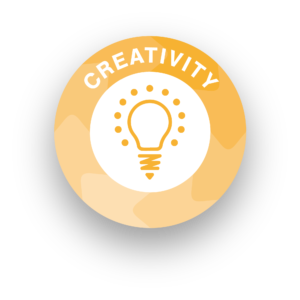
For advice on how to support children in art, see advice sheet PA414 Supporting High Learning Potential in Art and Design and the blog Art: Adding Extra Colour to the High Potential Learner’s World
Bolwerk, A., Dorfler, A., Lang, F. R., Mack-Andrick, J., Maihofner, C. (2014). How art changes your brain: Differential effects of visual art production and cognitive art evaluation on functional brain connectivity. PLoS ONE. https://journals.plos.org/plosone/article?id=10.1371/journal.pone.0101035
Bowen, D. H., Greene, Jay P., Kisida, B. (2014). The educational value of field trips. Education Next ,14 (1). https://www.educationnext.org/the-educational-value-of-field-trips/
Craft, A., Cremin, T., Burnard, P., Chappell, K. (2007). Developing creative learning through possibility thinking with children aged 3-7. In: Craft, A., Cremin, T., Burnard, P. (Eds.), Creative learning 3-11 and how we document it . Trentham.
Clow, A. (2006). Normalisation of salivary cortisol levels and self-report stress by a brief lunchtime visit to an art gallery by London City workers. Journal of Holistic Healthcare 3. https://www.researchgate.net/publication/252281628_Normalisation_of_salivary_cortisol_levels_and_self-report_stress_by_a_brief_lunchtime_visit_to_an_art_gallery_by_London_City_workers
Ebert, M., Hoffmann, J. D., Ivcevic, Z., Phan, C., Brackett M. A. (2015). Teaching emotion and creativity skills through art. A workshop for children. The International Journal for Creativity & Problem Solving , 25 (2), 23-35.
Fostering creativity: T he preschool teacher. (n.d.). [Online Lesson] in The Virtual Lab School. https://www.virtuallabschool.org/preschool/creative/lesson-4
Geirland, J. (1996). Go with the flow. Wired Magazine ,4(09). https://www.wired.com/1996/09/czik/
Hofmann, J., Ivcevic, Z., Maliakkal, N. (2020). Emotions, creativity, and the arts: Evaluating a course for children”. Empirical Studies of the Arts. Sage Journals. https://doi.org/10.1177/0276237420907864
Ivcevic Pringle, Z. (2020, April 3). Creativity at home in the times of pandemic. Dr. Zorana Ivcevic Pringle . https://www.zoranaivcevicpringle.com/post/creativity-at-home-in-the-times-of-pandemic
Ivcevic Pringle, Z. (2020, April 3). Manage emotions to innovate. Dr. Zorana Ivcevic Pringle . https://www.zoranaivcevicpringle.com/post/manage-emotions-to-innovate
Ivcevic Pringle, Z. (2020, April 3). Building your creative muscle. Dr. Zorana Ivcevic Pringle . https://www.zoranaivcevicpringle.com/post/building-your-creative-muscle
Ivcevic Pringle, Z. (2020, April 3). The how of creativity. Dr. Zorana Ivcevic Pringle . https://www.zoranaivcevicpringle.com/post/the-how-of-creativity
McDonald, H. (2019, February 15). The cognitive balancing act of creativity. Psychology Today . https://www.psychologytoday.com/us/blog/time-travelling-apollo/201902/the-cognitive-balancing-act-creativity
Phillips, R. (2015, March). Art enhances brain function and well-being. https://www.healing-power-of-art.org/art-and-the-brain/
Skov, M., Vartanian, O. (2014). Neural correlates of viewing paintings: evidence from a quantitative meta-analysis of functional magnetic resonance imaging data. Brain and Cognition , 87, 52-56.
The benefits of art on memory and creativity (2018, April 17). Invaluable . https://www.invaluable.com/blog/benefits-of-art/
Zambon, K. (2013, November 12). How engaging with art affects the human brain. American Association for the Advancement of Science . https://www.aaas.org/news/how- engaging-art-affects-human-brain
Zeidel, D. W. (2014). Creativity, brain, and art: biological and neurological considerations. Frontiers in Human Neuroscience , 8(389). https://www.ncbi.nlm.nih.gov/pmc/articles/PMC4041074/
About the author: Nina Vangerow is an artist, educator and online content creator with a MA in Ancient History. Teaching art and craft classes, Nina has developed a particular interest in the correlation between the arts, creativity and mental wellbeing. As a mother of a teenager with high learning potential, she has been a Potential Plus UK member and volunteer since 2012.
Share This Page
Related posts.

He’s Not a Bad Kid, Just Misunderstood: Ben’s Story

How to Survive a High Learning Potential Christmas

Christmas Gift Ideas the High Learning Potential Way

Summer Reading Challenge Reviews 2023

Charlie’s Story – An Outsider at 2 Years Old
Privacy overview.
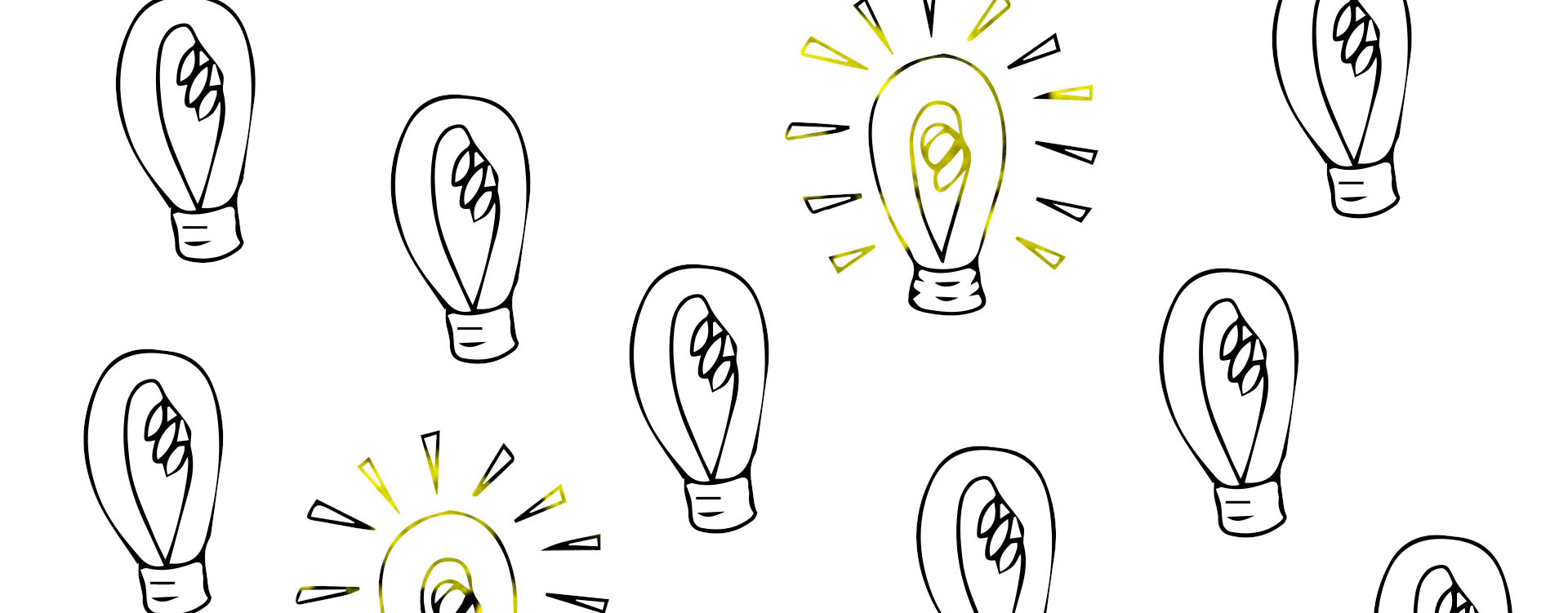
Design Thinking
Design is endlessly trying, refining, improving until slowly something begins to emerge that is so ingenious that it looks like magic if you don’t know what went on before: that’s what evolution does. – Designer, Joris Laarman
Design is all around us, whether it takes the form of objects and spaces, images and interactions, or systems and processes. Beyond meeting a need, design can experiment with forms, techniques, or materials to be an expression of a concept or beauty.
In this Web Quest, you will explore notions of design and learn about a creative problem-solving process called Design thinking. How do artists solve problems? Use these activities and videos at home, online, or in the classroom to spark curiosity, conversation, and critical thinking.
Web Quest includes:
- A scavenger hunt activity, where students identify how objects in the Denver Art Museum collection speak to both aesthetics and function
- A lesson plan inspired by Basket Chair (includes two videos, a facilitator’s guide and supportive materials for kids to dive into dive into design related concepts)
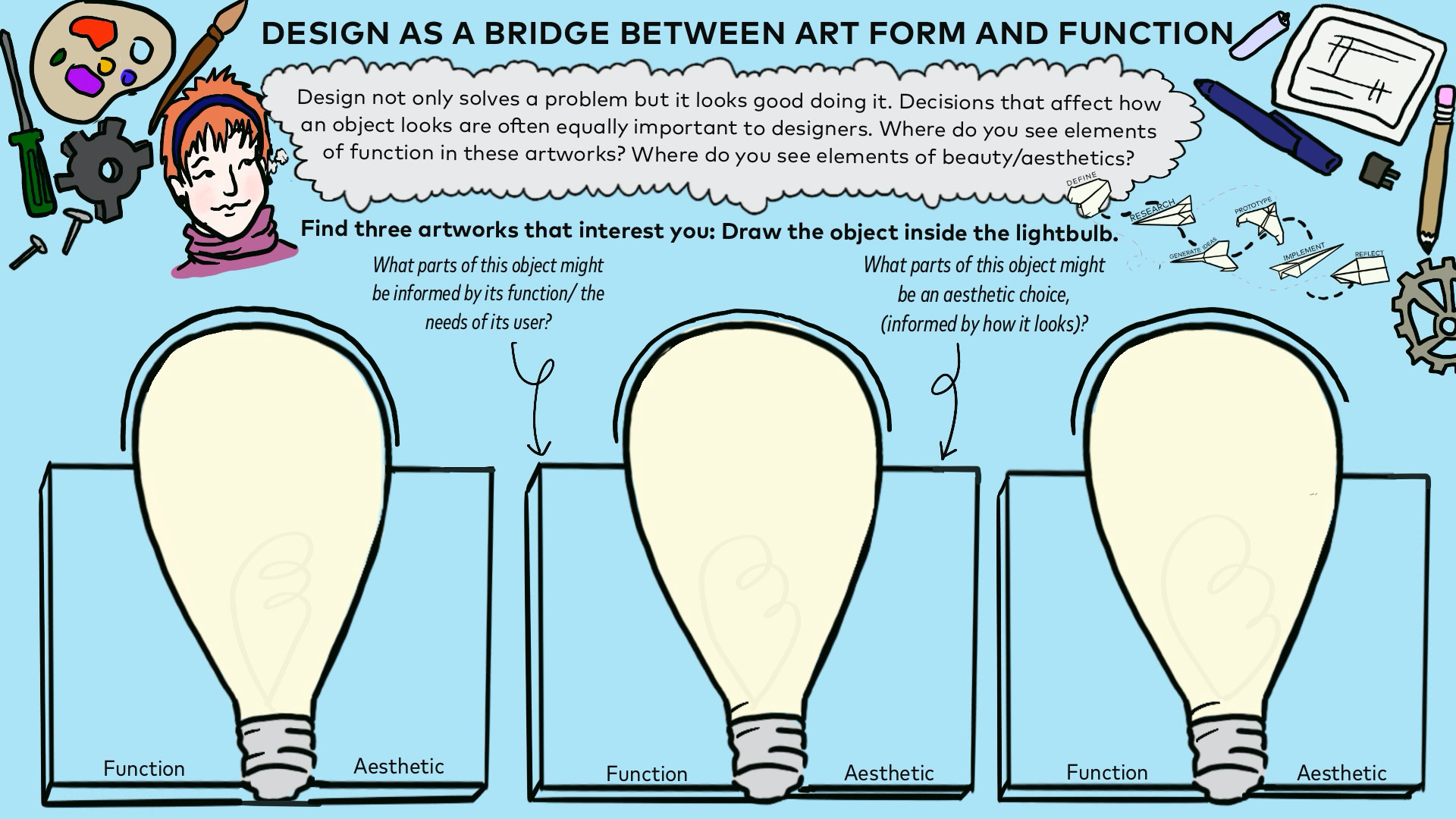
Print out this scavenger hunt or insert it into the learning management system of your choice to create an interactive activity prompting kids to look closely at the artworks found in the object gallery below.
Object Gallery
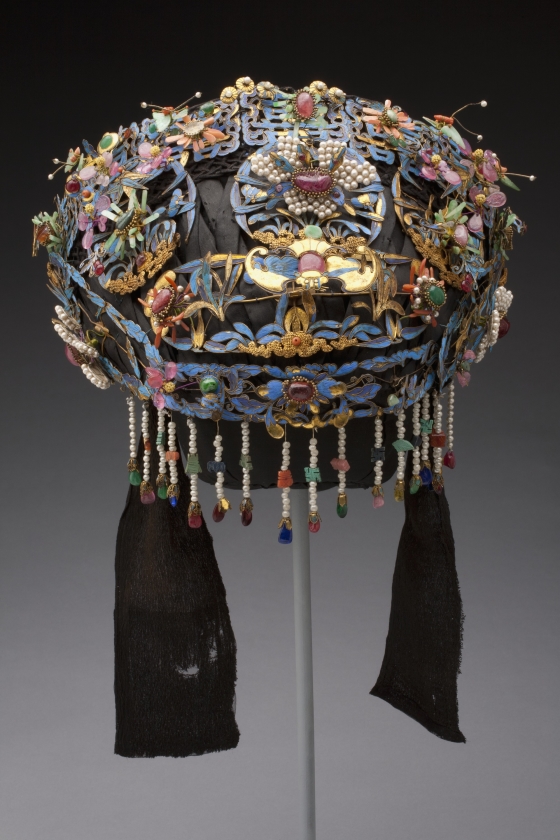
Web Quest Resources
- Design Thinking: Facilitator's Guide (web)
- Design Thinking: Facilitator's Guide (PDF)
- Design Thinking: Instructions for Kids (PDF)
- Scavenger Hunt Worksheet (PDF)
- Slides for Elementary (PowerPoint)
- Slides for Elementary (Google)
- Slides for Middle and High School (PowerPoint)
- Slides for Middle and High School (Google)
- Library Resources
The DAM established Creativity Resource thanks to a generous grant from the Morgridge Family Foundation. Featured activities are supported by funding from the Tuchman Family Foundation, The Freeman Foundation, The Virginia W. Hill Foundation, Sidney E. Frank Foundation – Colorado Fund, Colorado Creative Industries, Margulf Foundation, Riverfront Park Community Foundation, Lorraine and Harley Higbie, an anonymous donor, and the residents who support the Scientific and Cultural Facilities District (SCFD). Special thanks to our colleagues at the University of Denver Morgridge College of Education. The Free for Kids program at the Denver Art Museum is made possible by Scott Reiman with support from Bellco Credit Union.
Design Thinking: Artists Solve Problems is supported by Herman Miller Cares.

What it Takes to Live as an Ar..
Creative arts develop problem solving skills, the easiest seo tips for onlin...
- by Kaylee Osuna
- Artists Featured Articles
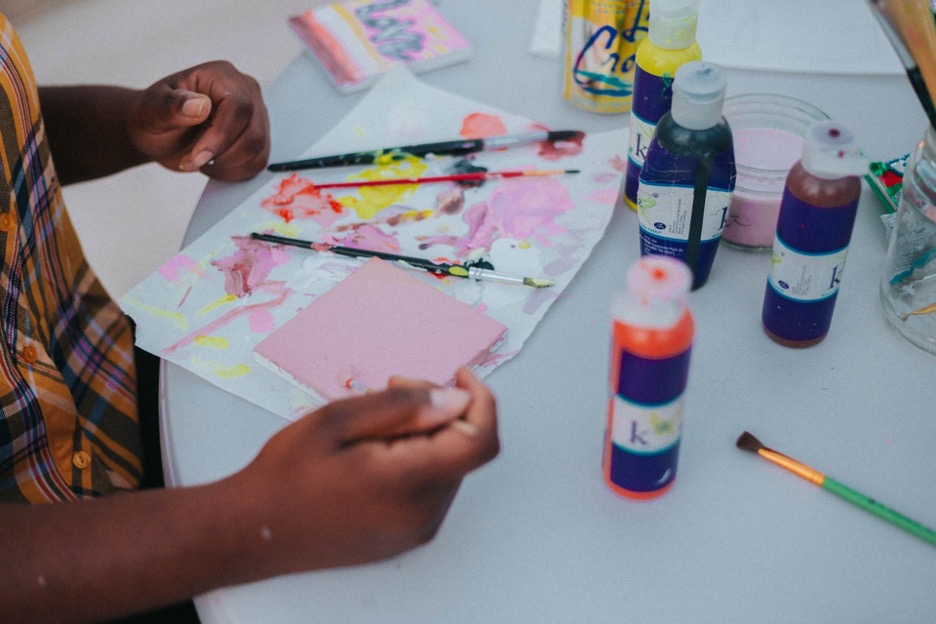
Public education often considers fine arts classes and programs expendable luxuries. This article explores how beneficial the fine arts are in education.
It is no secret that, when faced with recession pressures and budget cuts, most American public school systems decrease funding for fine arts programs or cut them entirely. Reasons cited for these decisions include fine arts do not generate much money for schools, nor are they part of the school’s core curriculum; therefore, they are expendable. Unfortunately, educational leaders are often not able to maximize the full educational and economic possibilities of the fine arts, and consequently, students’ learning opportunities suffer.
FINE ARTS PROGRAMS CAN GENERATE MONEY FOR SCHOOLS
Many American public schools sponsor annual plays and musicals, and despite performances being limited to a handful per semester, they do generate income for the school through ticket sales. Although they do require a considerable amount of time and practice to perfect these performances, as well as need a limited budget for props and supplies.
However, school drama performances can be increased to generate revenue and stay within budget by sponsoring ticketed events that do not require as much time or resources to produce. Such an example is orchestrating a comedy improv troupe, where only a few simple props and little preliminary preparation are necessary.
In addition, most schools completely neglect to showcase the talents of their budding visual artists. Sponsoring frequent school-wide art shows, auctions, and awards can generate additional funds for public schools, as well as provide enriching educational experiences for students.
For example, until visual art students reach college, few have opportunities to apply to an open call for entries or learn how to promote and set up an art exhibition. Learning these skills early gives visual arts students an edge over many art students who begin to navigate the exhibition circuit in their later college years. Furthermore, participating in art shows provides high school students who intend to study visual art with valuable experience to add to their college applications.
FINE ARTS PROGRAMS ARE BENEFICIAL TO STUDENTS’ LEARNING
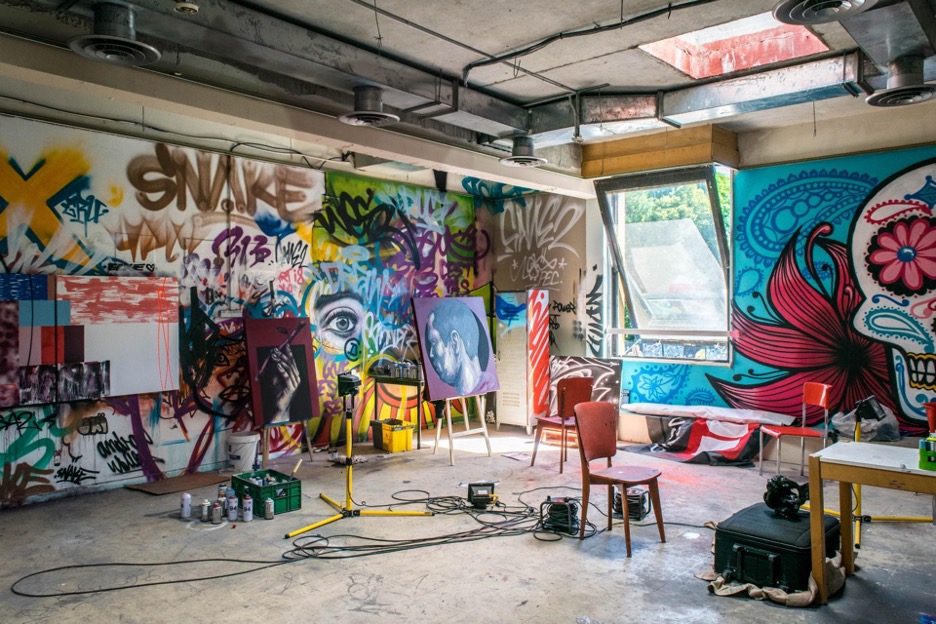
Matthieu Comoy for Unsplash
Art education authorities Eric Oddleifson and Judith Simpson have analyzed numerous studies conducted in urban and suburban school systems involving increased integration of the arts into classrooms. These studies overwhelmingly found that when the arts are incorporated into daily curricula, positive results are observed which transcend all subject areas. Examples include increased student creativity, better problem-solving abilities, more options to express ideas, open-mindedness and tolerance for different people and ways of thinking, and increased joy and motivation to learn.
Oddleifson’s writing also references the theories of Harvard psychologist Howard Gardner, who has conducted additional research advocating fine arts in schools. Gardner hypothesizes that there are seven total forms of intelligence: visual/spatial, musical, kinesthetic, interpersonal, intrapersonal, verbal, and logical. The first five intelligence forms are predominantly found in fine arts. However, most American school systems’ core curricula focus on subjects involving verbal and logical intelligence, such as English and science.
Removing fine arts from educational institutions not only deprives students of a well-rounded education but also denies students the ability to maximize their intellectual capacities. Just as art students require a scientific understanding of the natural world so they can render plants and animals with photo-realistic accuracy, wouldn’t science students benefit from creative stimulation to better generate ideas for hypotheses and experiments?
For students who are passionate about the fine arts, little is more devastating than extensive cutbacks or complete removal of fine arts classes. Furthermore, students who prefer other subjects do learn beneficial skills from fine arts, and the fine arts can contribute financially to public schools. Let us remember the true purpose of education and enrich students with a broad range of subjects so they may reach their full potential.
ART TEACHES MAKING JUDGMENTS ABOUT QUALITATIVE RELATIONSHIPS
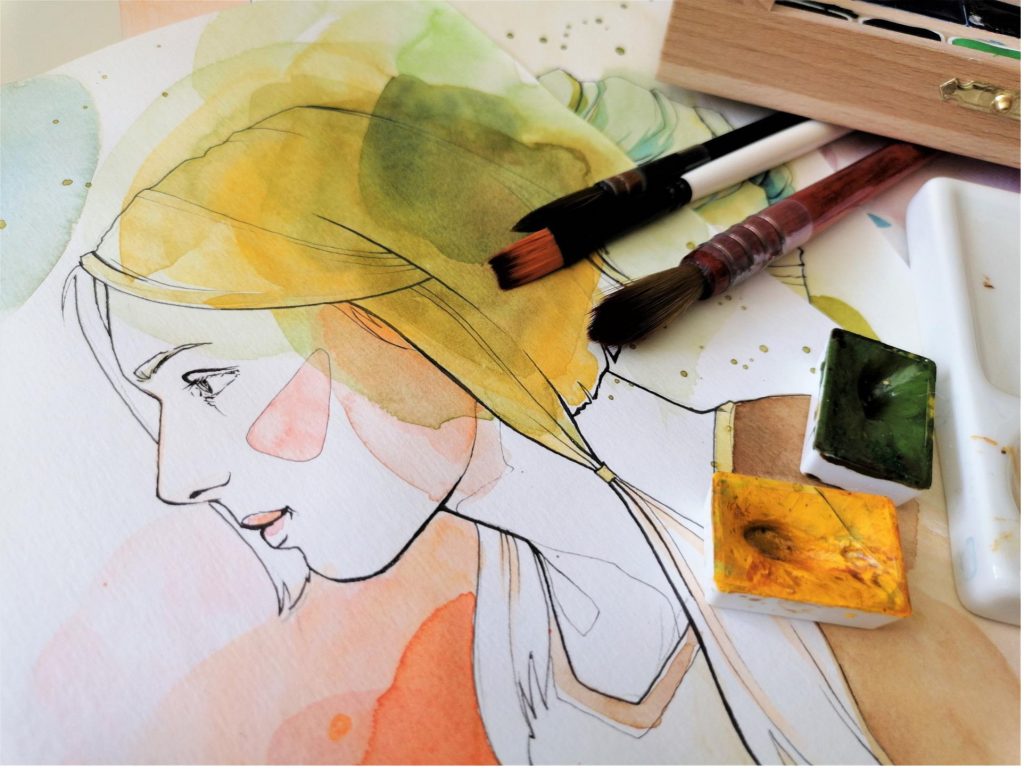
Martina_Bulkova for Pixabay
Through the development of qualitative intelligence, art teachers assist students to raise their consciousness and increase their capacity to interpret their world. Drawing on the work of Dewey, Eisner explains that the creation, appreciation, and understanding of visual form in general, and visual art in particular, is a mode of activity he considers to be a form of intelligence.
“The production and appreciation of visual art is a complex and cognitive-perceptual activity that does not simply emerge full-blown on its own.” [Eisner. 1972, p113]
DEFINITION OF QUALITATIVE INTELLIGENCE
Dewey advanced the idea that intelligence is the quality of an activity performed on behalf of inherently worthwhile ends. On this account, intelligence is a verb, a type of action, not a quantifiable noun, something that one possesses. For Dewey, intelligence is how a person copes with a problematic situation.
QUALITATIVE INTELLIGENCE AS PROBLEM SOLVING
When applying this notion of “intelligence” as problem-solving to the way students learn to make meaning through the modality of visual art, Eisner develops a descriptive argument [2002, p114]. He describes a process whereby students identify a problem, select qualities, and organize them so that they function expressively through a medium.
- A student who sculpts paints or draws is solving a problem
- He or she must find a way to transform, in some medium, an idea image, or feeling
- They start with a blank piece of paper, a lump of material, or data in electronic form
- The student uses this raw material to articulate a vision
- During this process, they hope to be responsive to the consequences of personal actions when managing material so that it functions as a medium
- When manipulating the media, the artist learns to be aware of the happy accident that is inevitable in the creation of artworks
- Through this learning strategy, it is hoped that the student will develop an ability to manage anxiety, frustration, and tension. The ability to forestall closure allows for the possibility of openness to a moment of unity and cohesion
- Students learn to recognize moments when the whole work comes together
- During the process, students will develop an ability to cope with thousands of interactions among visual qualities. Moments of cohesiveness, clarity, and unity will emerge through the child’s use of material
- Upon reflection students (perhaps in conversation with others) will conceive of her artistic purpose and recognize the meaning
Eisner calls the ability to problem solve in this way qualitative intelligence because it deals with the visualization of qualities expressed in images. The activity is directed at the creation and control of these qualities. It is generally recognized that artists work with seven elements of design.
MEDIATION THROUGH ARTISTIC THOUGHT
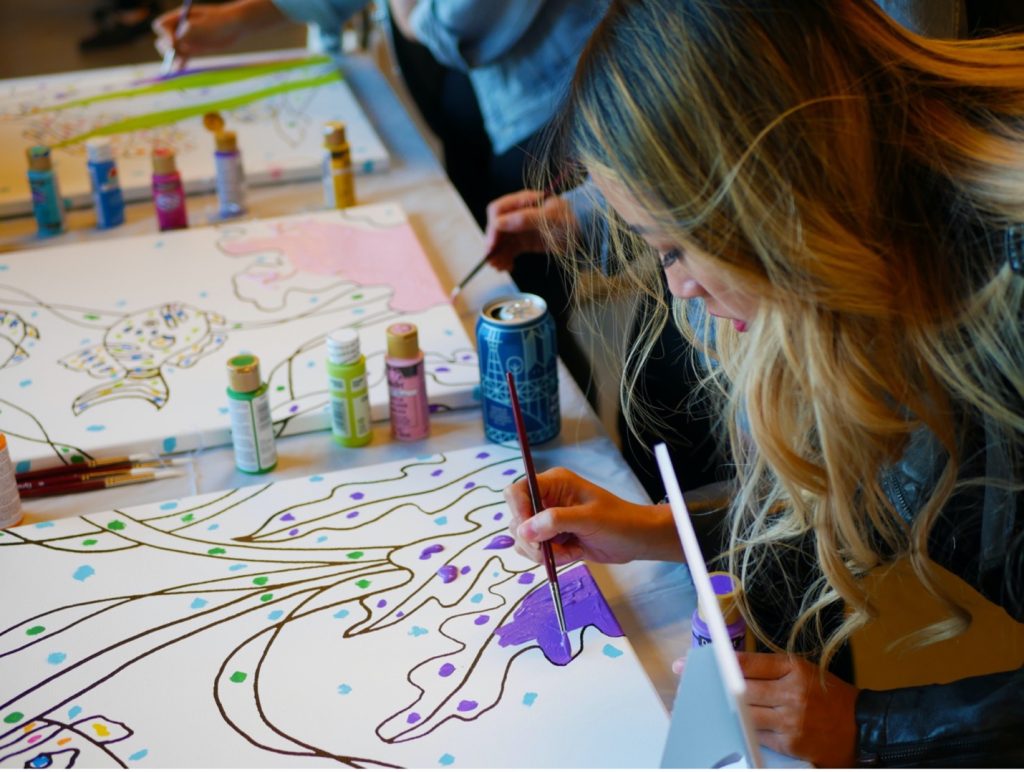
Rahul Jain for Unsplash
Qualities are mediated through thoughts, which are managed through the process, which terminates in a qualitative whole. A qualitative whole is an art form that expresses an idea or emotion by how those qualities have been created through the organization.
People use this form of intelligence throughout daily living. Artistic decision-making occurs when people select furnishings for the home, design a brochure, create a website layout, or decide upon what clothes to wear. The ability to do this is not simply given at birth, as one aspect of a genetic bundle of attributes. Rather, qualitative intelligence is an educable mode of expression that develops through experience and (hopefully) with guidance.
Intelligence, in this sense, is capable of expansion and through expansion, it expands the potential understanding of students. Through the arts, teachers assist students to raise their consciousness and increase their capacity to interpret their world.
The tendency to separate art from intellect and thought from feeling has been a source of difficulty for the field of art education. One of the results of this distinction is a lessening of the value of the creative arts fields of inquiry within the curriculum. Such a dichotomous distinction does not do justice to art or education.
For another presentation of this view see The Philosophy of a Creative Arts Educator Wisdom is the Legacy Left by Harry Broudy.
About the author : Kaylee Osuna is a professional writer at EssayWriterCheap.org , who loves to read and write about Psychology. She has participated in different conferences and presentations to gain more knowledge and experience. Her goal is to help people cope with their problems.
Kaylee Osuna
Click here to cancel the reply.
Your email address will not be published. Required fields are marked *
ARTEXPO NEW YORK 2024

ABN Subscribe

THE REDWOOD ART COLLECTIVE

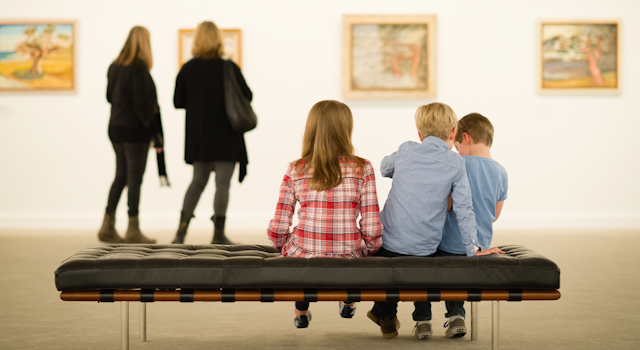
Why an education in visual arts is the key to arming students for the future
Professor, Chief Cultural Officer, Cultural Precinct, The University of Western Australia
Disclosure statement
Ted Snell does not work for, consult, own shares in or receive funding from any company or organisation that would benefit from this article, and has disclosed no relevant affiliations beyond their academic appointment.
University of Western Australia provides funding as a founding partner of The Conversation AU.
View all partners
Visual skills are essential for a sophisticated workforce, yet we offer so little education in the vital skills of learning to see and developing the ability to interpret and critique our image-saturated world.
In the global marketplace, the economy of the cultural industries is growing in importance, and visual expression is part of everyday communication. For Australia to compete in this marketplace, visual acuity, visual literacy and the ability to communicate visually must be recognised as an equally fundamental skill to those of language and numeracy. These can all be taught through grounding in the visual arts.
There is a growing body of international and Australian research that demonstrates a direct link between an arts-rich education from an early age and an increase in students’ confidence, their intellectual abilities across all learning areas, problem-solving skills, and general life skills.
The visual arts provide a vital cultural component and deliver on a range of important skills otherwise missing from the curriculum. They also provide a platform for addressing the important issues of our times; they build self-reflective, empowered communities; and, let’s not forget, they also bring great joy and reassurance in times of anxiety.
Future skills
As the 2016 World Economic Forum report on The Future of Jobs predicted, the top necessary skills required for the fourth industrial revolution will be complex problem-solving, critical thinking and creativity, alongside emotional intelligence and cognitive flexibility.
Read more: Fourth industrial revolution: sorting out the real from the unreal
Highly specialised, rigidly structured degree courses aimed at a specific job outcome will be redundant in this emerging environment. But degrees with a strong visual arts foundation will ensure individuals will flourish, not flounder, under the impact of disruptive technologies and when confronted by new ways of working.
Steve Jobs said he employed people at Apple with passion , particularly for problem-solving, “having a vision, and being able to articulate it so people around you can understand it, and getting a consensus on a common vision”. It’s why Jobs also said he wanted to see applicants’ drawing portfolios before he employed them.
Work in the visual arts also generates new images and develops new ideas. These have the potential for commercialisation at a time when the government is pursuing its agenda on innovation and promoting the creative industries. For instance, several of the residencies through the Australian Network for Art and Technology Synapse program have led to further research and potential commercialisation.
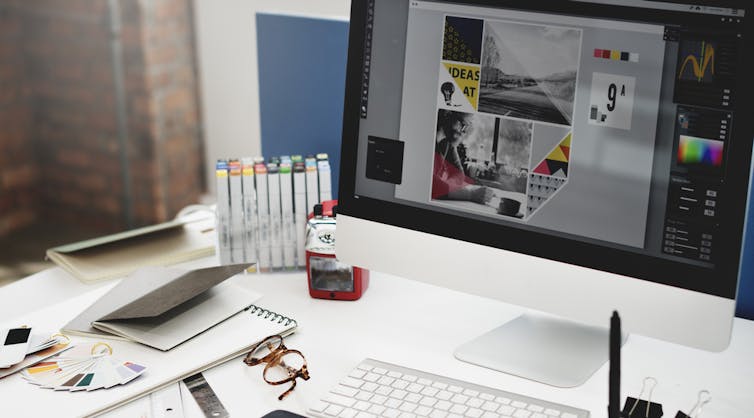
Ever-expanding digital platforms will also need more and more creative content, requiring that all employees in every profession have opportunities to develop these skills.
We must then ensure that the creative arts are a core component of the curriculum so that all students will become more resourceful and better equipped to successfully manage change.
As well as teaching us vital skills, the arts also enrich, enhance and transform individual lives. This is the intrinsic benefit of the arts, which also has a value to the wider community.
It’s not just about individual pleasure, though. The arts change attitudes, and by so doing they can transform society. An education in the visual arts provides students with a better chance of achieving these shifts in our collective consciousness.
Read more: Friday essay: can art really make a difference?
Embedding arts at universities
Studying the visual arts provides the hothouse environment that brings the instrumental and intrinsic benefits of the arts into unison. It becomes a forum in which to explore new possibilities and critique existing presumptions and preconceptions about art and life.
Our challenge is to find ways of integrating the visual arts into the core curriculum and at the heart of the student experience. This includes an object-based learning approach to teaching (for instance, including study of artworks and artefacts).
Internships, courses that integrate the arts within other disciplines, and collaborative projects designed for students across discipline areas are just some examples of strategies already employed at universities.
That is our challenge, to work collaboratively across academic disciplines to re-imagine the role of the visual arts in the 21st century university.
This article is an edited extract from a keynote address to the Australian Council of University Art & Design Schools (ACUADS) annual conference being held in Perth on September 27-28.
- Universities
- Visual arts
- Arts education

Audience Development Coordinator (fixed-term maternity cover)

Data and Reporting Analyst

Lecturer (Hindi-Urdu)

Director, Defence and Security

Opportunities with the new CIEHF
21st-Century Skills in the Art Classroom

As you prepare students to become lifelong learners, it’s important to equip students with a variety of skills. 21st-century skills are those students need to navigate an ever-changing, global society. Many schools districts are asking teachers to use these skills in their curriculum. The good news for art teachers is that we teach a unique subject where students can creatively apply what they have learned in other classes.
So, how can we facilitate the 21st-century skills in the art classroom?
Communication and collaboration.
What are they? Communication is a necessary skill we use every day. In art class, students can communicate verbally, as well as writing, and most often, visually. They decipher meaning from contemporary and historical artworks while creating a message in their own unique projects.
Collaboration is the ability to work together effectively with others. In the art classroom, collaboration is incorporated through group projects.
In The Art Room: One way to encourage communication in the art room is to show students how artists have communicated throughout history. Introduce examples of cave paintings, Egyptian art, Greek pottery, etc. Students can see how art allows us to communicate information visually. Then, they can apply this knowledge of a visual narrative to inspire their own artwork.
Try having your students work in groups or pairs to create an altered photograph. Explain to students that their altered photograph should convey a snapshot of a story. Students will need to be able to act as designers and photographers to complete this project.

Partners or groups can create scenes of battle, friendship, or celebration. Show them examples from Greek pottery depicting scenes from mythology. The whole story isn’t necessarily featured, only a key moment or scene. Each student should begin the project with an initial idea for their story, also called a narrative. Some of these ideas may evolve through the collaboration process as their peers offer helpful suggestions. Allow students time to communicate and feel comfortable making changes as they work.
- First, the project designer needs to envision how the finished photograph will look.
- Next, the designer will need to communicate their vision clearly to their photographer.
- Then, have the designer create a rough sketch of what they envision to give their photographers an idea of composition, angle, and distance.
- Finally, the photographer will use the sketch to best capture the designer’s idea with the camera.

Innovation and Creativity
What are they? As art educators, we know innovation and creativity go hand in hand. Innovation and creativity will solve the problems of today and the future. Our students need to be prepared with new solutions to both old and new problems. In the art classroom, we encourage our students to think creatively with every single project. Their ideas inspire us as educators to keep innovating and creating!
Thinking creatively comes naturally to some students, while others struggle to generate new ideas. Try to inspire creativity by providing a variety of examples, resources, and processes. Students may develop ideas better through brainstorming, collaboration, and the application of personal experiences.

In The Art Room: Consider giving students a simple project with a few parameters and lots of opportunity for creative additions. Use the inspiration of a famous artwork or tradition. For example, introduce students to The Nian Monster for Chinese New Year. While students won’t be making replicas of Chinese parade decorations, each student can make an original paper dragon based on their own creative legend.
- First, have students write a story about their dragon. The stories can range from grand adventures to endearing friendships.
- Next, students may work together to write stories that correspond with one another. As we already know, collaboration can inspire some very creative ideas!
- Then, students can create a paper dragon using a variety of materials as unique as their written story. Some dragons may have elaborate tails, beards, or wings, while others might appear ferocious with two heads and sharp teeth. The colors, shapes, and lines should reflect the dragon’s personality and story details.
- Finally, have your students share their stories with each other.
Critical Thinking and Problem-Solving
What are they? Critical thinking and problem-solving might sound like topics for a scientist or an engineer, but they can also easily be found in the art room! Critical thinking and problem-solving use both the right and left sides of the brain.
In The Art Room: Try giving your students a sculpture project with fewer instructions and added challenges.
- First, introduce your students to three-dimensional works by Auguste Rodin, Henry Moore, and Claes Oldenburg.
- Next, have your class brainstorm what the sculptures might be made of and how the artist communicated meaning.
- Then, after the students’ discussion, ask them to create an original sculpture in groups of three to five. Your minimal instructions should be to design a free-standing sculpture out of cardboard. The colors, lines, and shapes are to reflect a mood chosen by the students. You could incorporate some literature by reading the Dr. Seuss book, My Many Colored Days , as an excellent example of how we interpret different colors as specific moods.
- To continue, students will work together to agree on a single mood and decide how to best communicate that emotion with shapes, colors, and lines. They will collaborate as they cut their shapes out of cardboard and paint them with tempera paint. Once the shapes are dry, students may add lines with oil pastels.
- Finally, the challenge: Each group should try to come up with a way of assembling the pieces to create a free-standing sculpture without the use of glue! Some students may try using pipe cleaners and hole punches to connect the shapes. While others may join the shapes by cutting slits in the cardboard to balance pieces against one another.
This project can be extremely messy, wild, and at times, overwhelming. You could easily eliminate some of the issues by being more hands-on and giving specific demonstrations, but the point of this project is to encourage your students to do some of that learning on their own through the process. As their teacher, you do not always have to solve the problems for them. Instead, encourage students to explore, think critically, and problem solve collaboratively.
Technology and Informational Literacy
What are they? The abilities to safely and effectively navigate online and use technology for the greater good are essential to today’s students. Technology and informational literacy have become more and more integrated into the arts. Through internet research, software programs, and social media, students can connect with art content like never before.
In The Art Room: Use artists affiliated with the Harlem Renaissance to inspire a research-based art project:

- First, introduce students to influential musicians and poets of the Harlem Renaissance.
- Then, rather than explaining an artist’s or culture’s perspective yourself, look for a primary source online. Use technological resources like YouTube to show students how good content can be used to learn. Students will appreciate hearing information directly from the source. For a Harlem Renaissance unit, you may choose this video featuring an expert professor from the University of Colorado in Boulder. The video was produced by teens, which may inspire your students, as these young filmmakers created the documentary for the National History Day competition.
- Next, ask your students to research information about three specific artists of the Harlem Renaissance: Jacob Lawrence, Romare Bearden, and Lois Mailou Jones, or discover their own. At the end of class, students will answer questions about their chosen artist and reflect on this information in writing.
- Finally, each student will choose one artist to inspire an original art project. When the projects are completed, students can explain, in writing, how the artist inspired their work. This type of project helps show how well students can apply research.
Final Thoughts
21st-century skills are essential for students to succeed in the Information Age. The National Art Education Association agrees, “the visual arts provide opportunities for all students to build their skills and capacity in what the Partnership for 21st-Century Skills calls ‘Learning and Innovation Skills,’ specifically Creativity and Innovation; Critical Thinking and Problem-Solving; and Communication and Collaboration.”
As art educators, we already promote many of these 21st-century skills every day, as we focus on individual student needs and project-based learning. In doing so, we can best prepare students for today’s global society.
How do you promote 21st-century skills in the art room?
What projects are encouraging your students to think critically and problem solve?
How are students collaborating in your art room?
Magazine articles and podcasts are opinions of professional education contributors and do not necessarily represent the position of the Art of Education University (AOEU) or its academic offerings. Contributors use terms in the way they are most often talked about in the scope of their educational experiences.

Jordan DeWilde
Jordan DeWilde, a high school art educator, is a former AOEU Writer. He aims to encourage students’ individual creativity through a diverse and inclusive curriculum.

No Wheel? No Problem! 5 Functional Handbuilding Clay Project Ideas Students Love

Love Letters: 3 Amazing Ways to Integrate Calligraphy, Cursive, and Typography

Embracing the Magic: A Love Letter to Pinhole Photography in the Art Room

A Love Letter to Yarn: 5 Reasons Why Art Teachers Are Obsessed

National Art Education Association
Unofficial Informational Website

Showing Art Students The Value Of Problem Solving
Creating art isn’t the place to go if you have a problem solving problems. It seems to be a never ending process of attempting to bring something new into the world and not messing up and creating mud instead.
A teacher has to make sure the students see the value in being able to solve problems and there is help.
Table of contents
The fundamentals, sources of problem solving, give the students problems, art solving life problems.
Young people are of course constantly learning the basics of survival and being part of a community. As they study and apply what they’re learning in art, they’ll run into one problem after another.
This has to be handled as soon as possible because problem solving 1 skills will be needed just to survive. With art, you’re working with materials and techniques that messy, somewhat dangerous, and expensive. For example, a student using charcoal will have to deal with the potential smudging that can easily happen if a shirtsleeve or clumsy hand brushes across the paper.
Here, students have to work with the medium and take their lumps along the way so it doesn’t happen again. With watercolor, there is no mercy. Which colors to use and how to keep from making a mistake are for starters. Watercolor is usually unforgiving if a mistake is made and only the best can do any kind of repair on a watercolor painting once it’s goofed up.
Students should be taught not to become angry 2 or exasperated, but instead take things calmly and see where what went wrong and try to remedy it and prevent such from happening in the future. Don’t even talk about oils. One has to be a junior chemist to master oils. The various brushes, oil pigments and chemicals can lead to disaster if one doesn’t keep one’s eyes open.
That all being said, there are other problems to solve they need to be prepared for. Setting up displays, learning how each of the humanities and sciences dovetail into art so that the final work is professional and has intrinsic value. As a student continues to solve one problem after another their confidence builds and new problems don’t seem so daunting.
Believe it or not, one awesome venue for teaching a student about problem solving is in video games. The well made games teach patience, conserving resources, picking the right tool, and more. The skills needed to complete the game teach the student which faults and pluses in their character that are needed to avoid or resolve problems.
One teacher, Diane Jaquith of the Burr Elementary School in Newton, MA points out several vital issues regarding students and problem solving. Actually she had a problem with introducing the term, “problem finding”. She realized the students might be confused so she took things one step at a time.
First engaging the students to discuss problems in general and what sort of problems they encountered doing art. This then led to her slowly introducing problem finding and soon the students were up to snuff. She added to her method and all went well.
The teacher should present problems for the students to solve. The teacher should take careful eye to see how each student reacts. When faced with a problem do they immediately engage in grumpy or fearful behavior? If so you’ll need to nip it in the bud right there.
Emphasize that if one gives up emotionally then one gives up everything and no progress made. See if the student uses reference material to clear up any misunderstandings and also to see how their art can be applied with less hassle. From concept to execution, a work of art will present problems.
Questions about composition and lighting, texture and more will arise and they’ll have to make a choice. The teacher should be there to encourage and guide but not to overwhelm the student or they won’t learn self initiative. Once the student realizes they can solve a problem and that no one will punish them for making a mistake or tease them, they’ll look forward to tackling problems and become far more self reliant in all areas of their lives. Parents will notice the change for the better and that will be a big feather in any teacher’s hat.
Now comes the big game. Students realizing that they can produce a work of art that could solve other problems. For example doing a painting of a problem area in town. It may be a dilapidated building that no one has taken responsibility for. No one could figure out what to do with it or how to take it down.
Then here comes one of your students finding the structure of interest. They draw it or paint it up and some city official or engineer comes by and see s the art. They realize that the painting shows something about the structure they hadn’t seen before.
It gives them an idea on how to remedy the situation and give credit to the painting and artist. A kid experiencing this kind of scenario will then know that they can make an impact on the world to solve a delicate problem with artwork skills. Armed with this knowledge they’ll forge ahead to new problems to be solved the creative way.
As stated earlier, problem solving is part of life. We all do it a hundred times a day. Kids using their art that presents problems and can be used to showcase and solve problems is a wellspring we all can drink from. In the end, once accustomed to facing and solving problems, the student will be stronger and greater asset to themselves, the school, family, and community.
- Problem solving app (ItsGoneWrong) Itsgonewrong.com
- Handling anger (Parenting.com) Teach Your Child to Handle Anger
About The Author

Professor David Percival
Director of AHVC programme, and specialist in art and technology, including presence research, mixed and virtual reality.
Try searching for
- Concerts and Events
- Employment / Jobs
- Faculty and Staff
Applications are still open for Arts Camp and Arts Academy. Programs fill quickly—submit your app today!
The art of problem solving.
Four Interlochen alumni share how their arts backgrounds inform their work in the sciences.
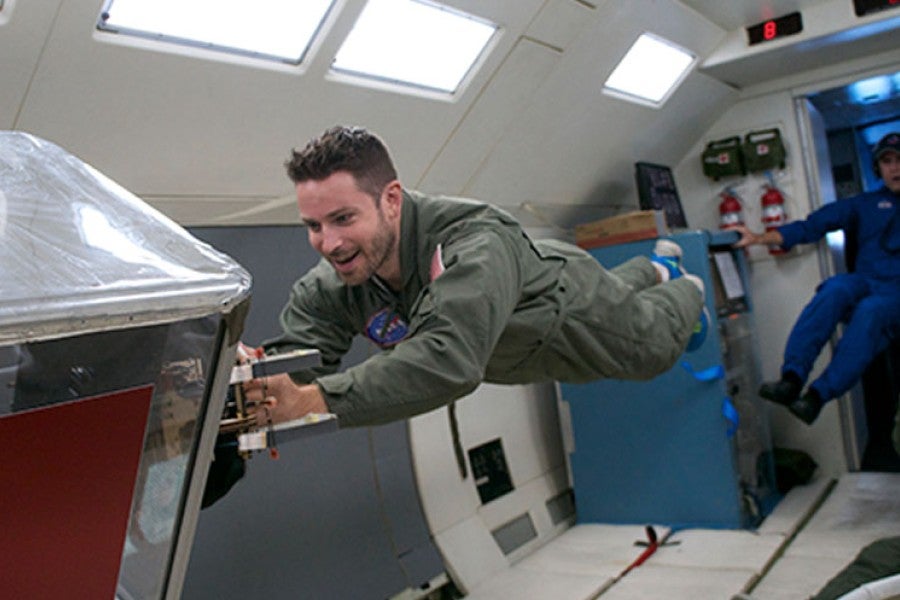
Aaron Parness tests one of his creations during his tenure at NASA.
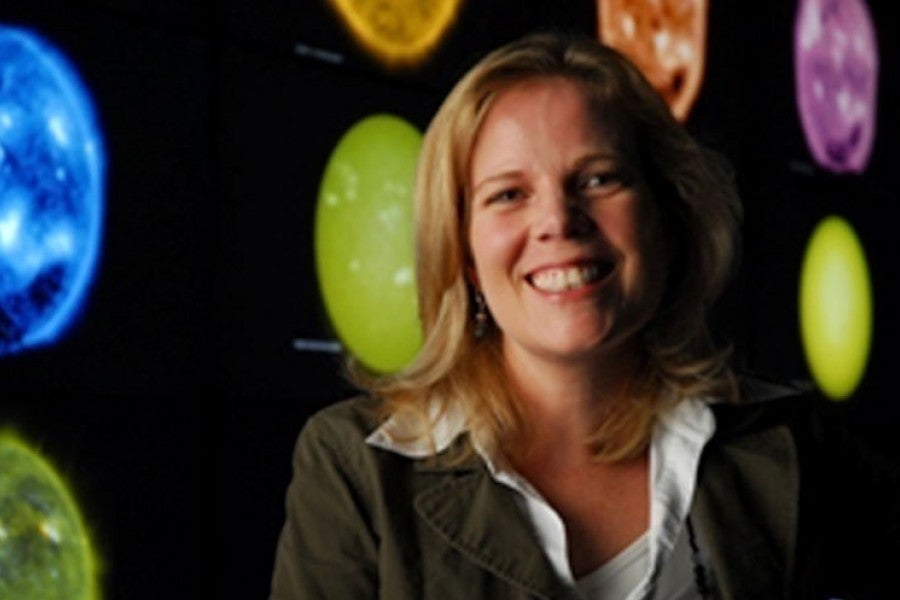
NASA heliophysicist Holly Gilbert.
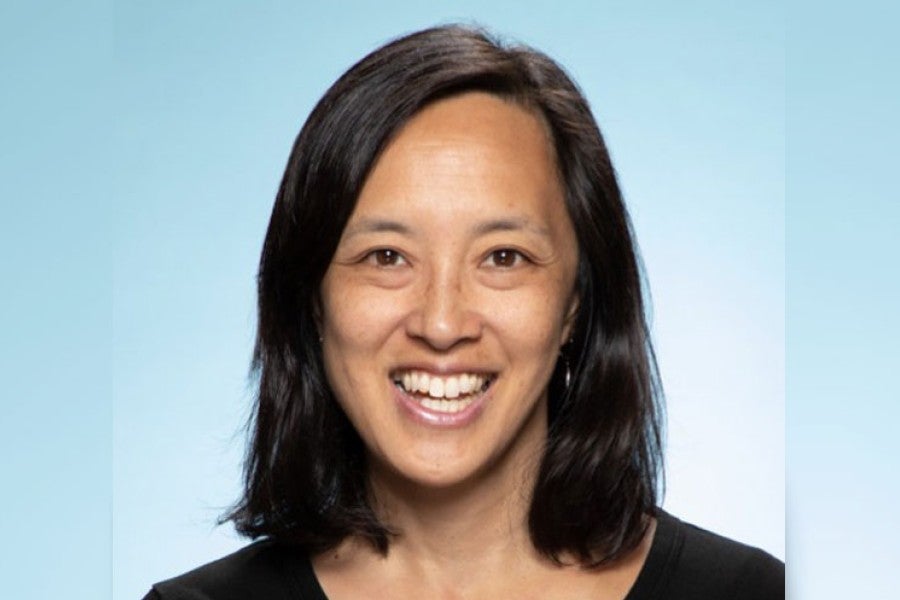
Biomedical engineer and Boston University professor Joyce Wong.

Independent global public health and development consultant Timothy Thomas.
In times of crisis, many cling to science for the concrete solutions it offers to our problems. There is a certain comfort in the regimented nature of science: Its laws, its data tables, its tried-and-true experimental methods.
But there are limits to science. Occasionally, we face a crisis that defies the scientific method, an issue whose solution will not be observable, measurable, and repeatable.
In these moments, we look to our creative problem-solvers, those who search for outside-the-box for answers to life’s most challenging riddles. Many of these individuals are artists-turned-scientists who cut their teeth in creative pursuits before pursuing a life of theories and equations. We caught up with four Arts Camp and Arts Academy alumni to learn how their creative pasts inform their scientific careers.
Developing discipline and focus
For all four alumni, one of the most important lessons their musical training taught them was discipline.
“The self-discipline that I learned by being involved with the arts at Interlochen definitely helped me develop patience and discipline in solving scientific problems,” said Holly Gilbert (IAA 86-88), a NASA heliophysicist and Interlochen Arts Academy cello alumna.
Aaron Parness (IAC 91-93), an Interlochen Arts Camp violin alumnus and principal research scientist on Amazon’s robotics and AI team, agrees. “The arts improved my ability to focus deeply for long periods of time—a skill I honed during practice sessions,” he said. “One of my greatest assets at work has been my ability to concentrate intensely on a complex task. Reaching that state of 'flow' is something I probably first experienced playing the violin.”
For independent public health and development consultant Timothy Thomas (IAA 76-78), a lesson from an arts instructor continues to guide his work in the scientific sphere. “I met an acting teacher who said, ‘be ruthless in your pursuit of the specific,’” Thomas said. “That has always governed how I work: doggedly pursuing the specific, trying to find what’s real and authentic in any piece I create. That commitment to specificity is important for anybody in any profession—whether they’re a surgeon, a stockbroker, or a farmer.”
Learning to play with others
While musical training often takes place in the privacy of a practice room, orchestras and chamber ensembles provide opportunities to learn the importance of collaboration.
“Playing the cello and piano taught me how to work together on a team, like in chamber music,” said Joyce Wong (IAC/NMC 78-81), a professor of biomedical engineering at Boston University. “I learned how important it is to trust your partners and pull your weight in a project.”
For Parness, the orchestra—with different players performing different parts—served as a model for how individuals with diverse skills can collaborate to solve one problem. “Playing in an orchestra provided a fertile learning opportunity for teamwork and coordinated effort,” Parness said. “All of my projects today rely on teams of scientists and engineers that bring different skills to the problem.”

Disrupting the scientific method
Science is by nature analytical. However, all have found ways to inject their creativity into the sciences.
“Being embedded with incredibly creative people at Interlochen has given me a unique perspective in attacking science,” Gilbert said. “I think I learned early on that innovation and creativity are intimately related, and it's incredibly important to leverage innovation at a place like NASA.”
Gilbert’s problem-solving method echoes the musician’s task: Applying privately honed techniques in an ensemble setting. “I first approach problems from all angles, making sure I understand the core of the problem,” she said. “Then I consult with others, preferably a diverse group of scientists, to develop potential solutions. Often, one solution is not obvious—nor is it the only approach.”
Wong, too, recognizes the parallels between practice and science. “I like to break the problem up into smaller pieces, like I would if I were learning a difficult musical piece,” she said.
Creativity is at the core of Parness’s approach to problem-solving, a technique known as iterative design. “When confronted with a difficult problem, I try to brainstorm as many possible solutions as I can before I start to pass any judgement,” he said. “In this divergent stage of the process, it's about being creative and generating outside-the-box ideas. After my team has exhausted ourselves, only then do we start to prioritize and rank what we want to prototype.”
Thomas, who frequently collaborates with scientists, understands the importance of his unique voice in the search for solutions. “Scientists see things in black-and-white, in terms of ‘it works’ or ‘it doesn’t’,” Thomas said. “What I add to the conversation is a reminder that there are many ways to look at a problem. There are factors that influence the problem that we may not know, and we have to explore the unknowns and be honest in our commitment to see all points of view and facets of the problem. A creative mind brings that into a question that would otherwise be solved in a binary way.”
Embracing a growth mindset
In a swiftly changing professional field, Parness leans on the growth mindset that his musical training helped develop. “Music provided an opportunity to internalize the process of improving with practice,” he said. “Today, I'm not afraid to dive into a subject where I'm not an expert, like machine learning and artificial intelligence in the past year, because I know that I can learn and get better over time. Being fearful of taking on new challenges is something I've seen hold back many of my colleagues.”
Maintaining balance
Music and art remain a durable part of all their lives and an important counterpoint—or enhancement—to their scientific careers.
“I listen to music while grant writing, namely Mozart’s Requiem ,” Wong said. “I also enjoy going to concerts. I would love to play chamber music again.”
Gilbert recently picked up the cello again after more than 30 years away from the instrument. “It definitely provides a dimension to my life that is hard to get from other things,” she said. “My daughters are also musical, so we have music in the house often. Music really is fundamental to feeding my soul and making my life full.”
Parness, too, enjoys sharing the arts with those closest to him. “My wife, Alma, and I subscribed to the LA Philharmonic for many years, and we regularly attend the theatre with my sister Rachel,” he said. “Recently, it's been incredibly fun introducing our two daughters to music, dance, and visual art. I'm looking forward to lots of daddy-daughter duets and trios!”
Thomas remains perhaps the most involved in the arts: When not consulting on public health, he performs semi-professionally as a classical singer, takes acting classes, teaches private voice lessons, and is a member of the board of several New York City arts organizations.
“I’ve never really left the arts,” he said. “ It’s always been an integral part of my life. I just stopped trying to make my living in it.”
More Like This
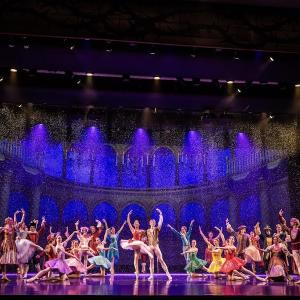
April 5, 2024

March 27, 2024
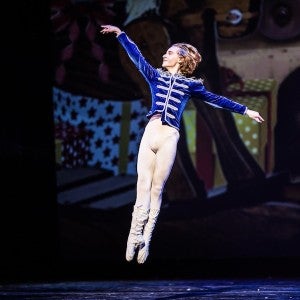
March 25, 2024
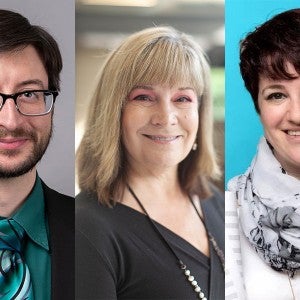
March 13, 2024

February 20, 2024
What is Art Education: Exploring its Purpose and Impact
Time to Read:
What is Art Education
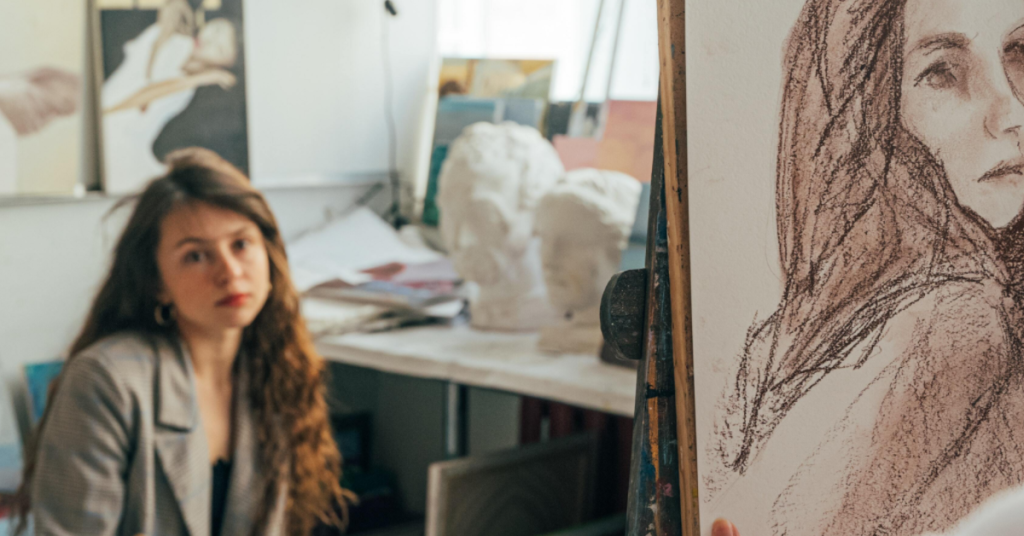
Are you curious about the power of art education? Have you ever wondered why it’s so important to have art in the classroom?
In this article, we will explore what is art education. From its benefits on individual growth and development to its ability to prepare students for life and work, we will dive into the fascinating world of art education .
Join us on this journey as we discover the true value of art education and how it can make a difference in students’ lives everywhere. Get ready to be inspired and amazed!
Key Takeaways
- Art education covers a wide range of visual and performing arts disciplines.
- The main goal is to teach students the creation, production, and appreciation of various art forms.
- Art education promotes creativity, critical thinking, and problem-solving skills.
Table of contents
The Disciplines in Art Education
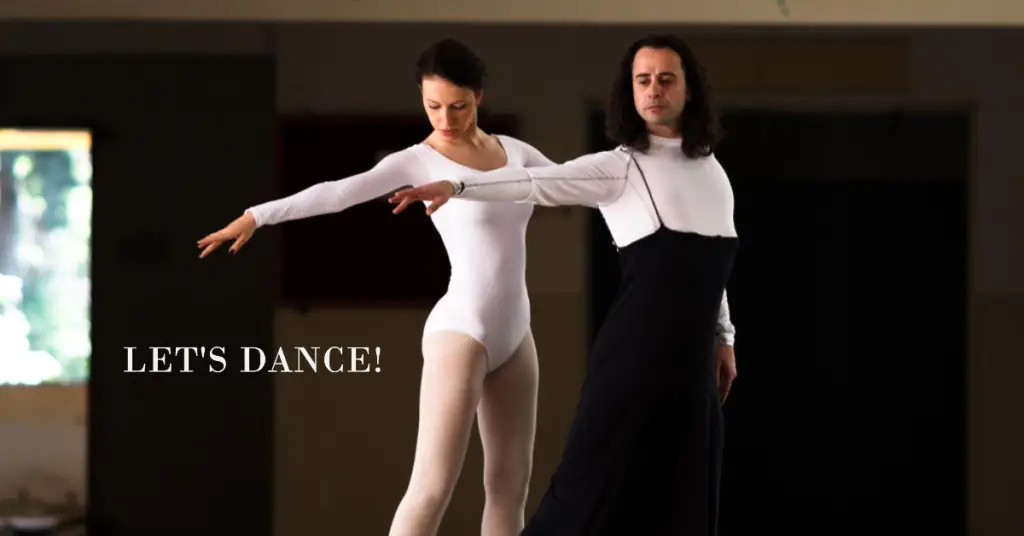
Art education encompasses a variety of disciplines that involve learning, instruction, and programming based on visual and tangible arts.
It includes performing arts such as dance, music, theatre, and visual arts like drawing, painting, sculpture, and design.
Art education aims to teach students how to create, produce, and appreciate various art forms, as well as to understand and evaluate the work of others.
Through art education, students are exposed to diverse artistic practices, where they can develop their creativity, critical thinking, and problem-solving skills.
Furthermore, it provides opportunities to explore cultural heritage and appreciate the importance of creativity in society.
Integrating arts into education allows learners to express themselves and discover their talents.
Understanding Art Education
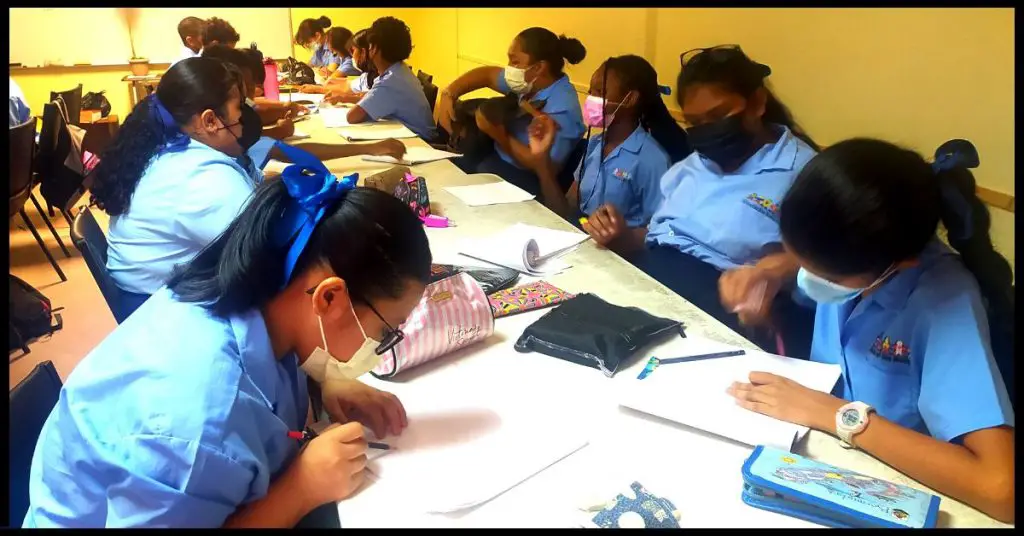
Art education is a vital educational experience that fosters creativity and artistic expression and offers various cognitive and emotional benefits.
It prepares students for the challenges in life by enhancing their problem-solving skills, visual-spatial abilities, and collaboration capabilities.
Incorporating arts in education allows you to explore your creative potential while providing a foundation for understanding various art forms.
Whether it is music, dance, visual arts, or theatre, arts education is crucial in broadening your perspective and nurturing your imagination.
As you delve deeper into the art world, you will learn that it is a powerful medium to express emotions, thoughts, and ideas, transcending cultural and linguistic barriers.
The essence of arts learning lies in its ability to facilitate the acquisition of artistic skills and instil a sense of appreciation for diverse art forms.
This helps you better understand various cultures, traditions, and histories, fostering empathy and respect for others.
Moreover, exploring, creating, and appreciating art can be therapeutic, enabling you to manage stress and emotional turmoil effectively.
To sum up, understanding art education is vital for holistic personal growth, encompassing cognitive, emotional, and social development.
So, embrace the world of arts, experience art education’s benefits , and appreciate the richness it brings to your life.
Importance of Art Education
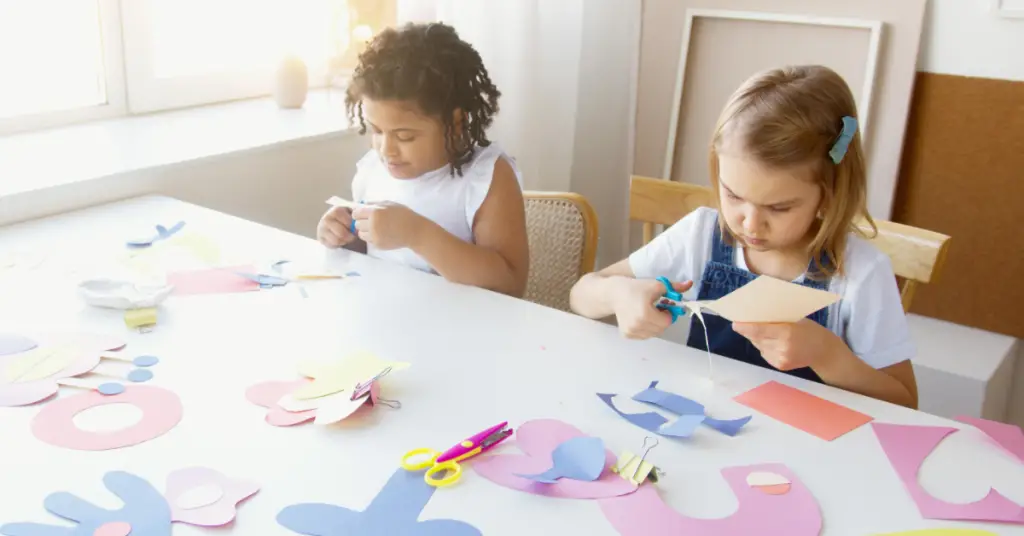
Art education is crucial in fostering creativity and promoting a well-rounded learning experience.
As you explore the importance of art education , you will find numerous benefits that contribute to the overall development of every student.
One of the primary reasons art education is essential is because it helps students engage with school and reduce stress.
Participating in various art forms, you can experience a sense of accomplishment, personal growth, and a deeper connection with your emotions.
This engagement enhances your learning experience and helps you better manage stress.
Incorporating art education into your curriculum aids in developing social-emotional and interpersonal skills .
Through artistic expression, you learn to communicate effectively, work collaboratively with others, and build empathy toward diverse perspectives.
These skills are essential for success in both personal and professional life.
A robust arts-learning environment enriches your educational experience by stimulating critical thinking and problem-solving skills.
Art education challenges you to view the world differently and develop innovative solutions to complex problems.
This exposure to diverse art forms fosters cognitive flexibility and adaptability, which are highly valued in today’s fast-paced world.
Partaking in art education equips you to handle constructive criticism. In the creative process, receiving feedback and refining your work is integral.
By embracing constructive criticism, you develop resilience and learn to persevere in facing challenges.
In conclusion, art education is vital to creating a well-rounded academic experience.
With numerous benefits, ranging from stress reduction to the development of interpersonal skills, it is clear that art education plays an essential role in every student’s overall growth.
Pedagogy in Art Education
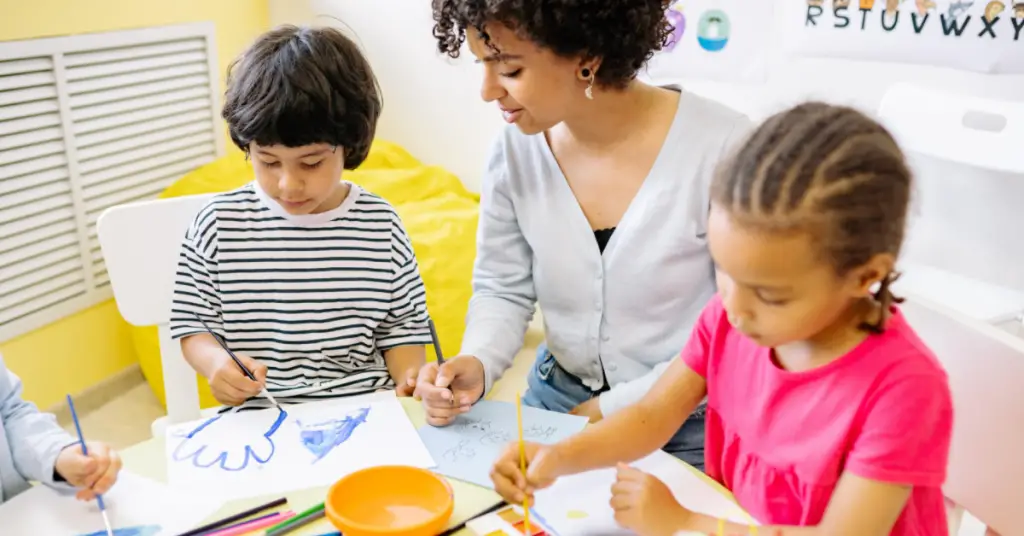
As an art educator, your primary role is to foster the development of creativity, critical thinking, and problem-solving skills in students.
Pedagogy in art education is vital to this role, as it outlines the methods and techniques used to teach art in a K-12 setting.
Choice-based pedagogy is a popular approach in art education, where you, as the art teacher, design learning activities that support students as artists and provide them with authentic choices to respond to their ideas and interests through art-making [1] .
This approach encourages student autonomy, allowing them to explore various materials and techniques and their artistic visions.
Another critical aspect to consider in your pedagogy is culturally responsive teaching. As an art teacher, you must acknowledge and respect the diverse backgrounds of your students.
By incorporating their unique cultural experiences into your teaching and adapting your methods to ensure that all students can connect with the material, you are contributing to an inclusive art education environment.
This can be done by showcasing diverse artists, discussing various art forms from different cultures, and incorporating culturally relevant themes into projects [2] .
You should also strongly understand discipline-specific knowledge and techniques to teach art effectively.
Your coursework and professional development should emphasize art history , contemporary artistic practices, and various media and materials.
This helps you introduce students to a wide range of artists and movements, enabling them to critically engage with the world of art.
As a teaching artist, you may also work in community settings, collaborating with schools, museums, or other organizations to bring art education experiences to various age groups and populations.
Your pedagogy might need to be flexible while working as a teaching artist, adapting to the unique needs and goals of each project or setting.
Collaboration and community engagement become essential elements of your teaching approach in these contexts.
Remember, your pedagogy in art education should be confident, knowledgeable, and clear, reflecting your dedication to fostering creative growth in your students while remaining attentive to their needs and backgrounds.
Doing so contributes to developing a new generation of artists and creative thinkers.
The Role of Art Educators
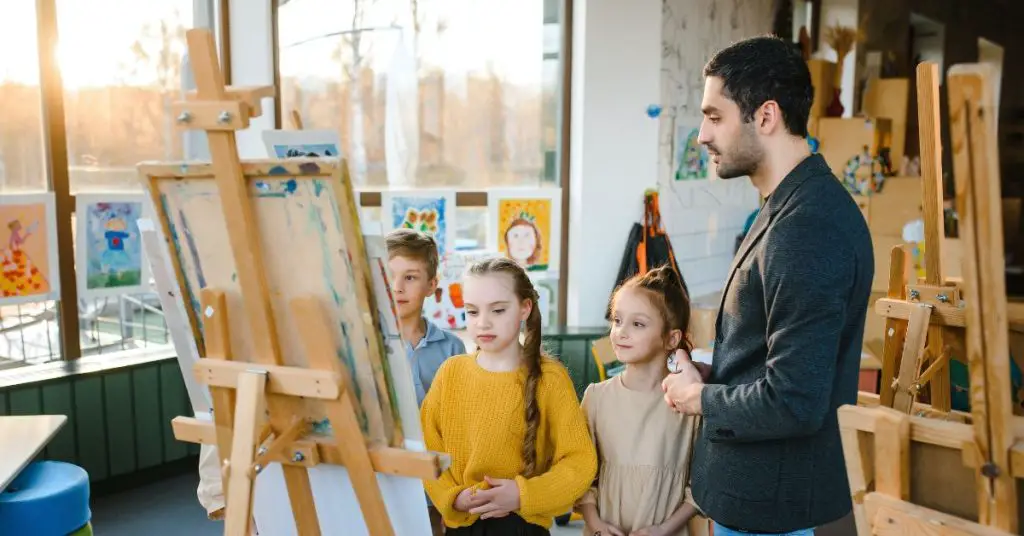
As an art educator, your primary responsibility is to provide students with a well-rounded understanding of the visual and tangible arts.
This includes teaching various art forms such as drawing, painting, sculpture, and design works and performing arts like dance, music, and theatre [3] .
Your role goes beyond teaching the techniques and skills required to create art. It would help if you also instilled in your students an appreciation for and understanding of the cultural , historical , and social contexts in which different art forms have evolved.
This helps students develop critical thinking abilities and better comprehend the significance of art in society.
In addition to being knowledgeable in your subject matter, as an art educator, you should cultivate a creative and supportive learning environment for your students.
This includes encouraging experimentation, curiosity, and self-expression while providing constructive feedback to help students grow as artists.
Actively engaging in arts advocacy is another crucial aspect of your role as an art educator.
You can promote the value of art education by communicating its benefits to parents, school administrators, and community stakeholders, highlighting how it contributes to students’ overall engagement and achievement in school National Art Education Association .
In summary, as an art educator, your role encompasses teaching a variety of art forms , nurturing creativity , fostering critical thinking , and advocating for the importance of an arts education in students’ lives.
Visual and Performing Arts
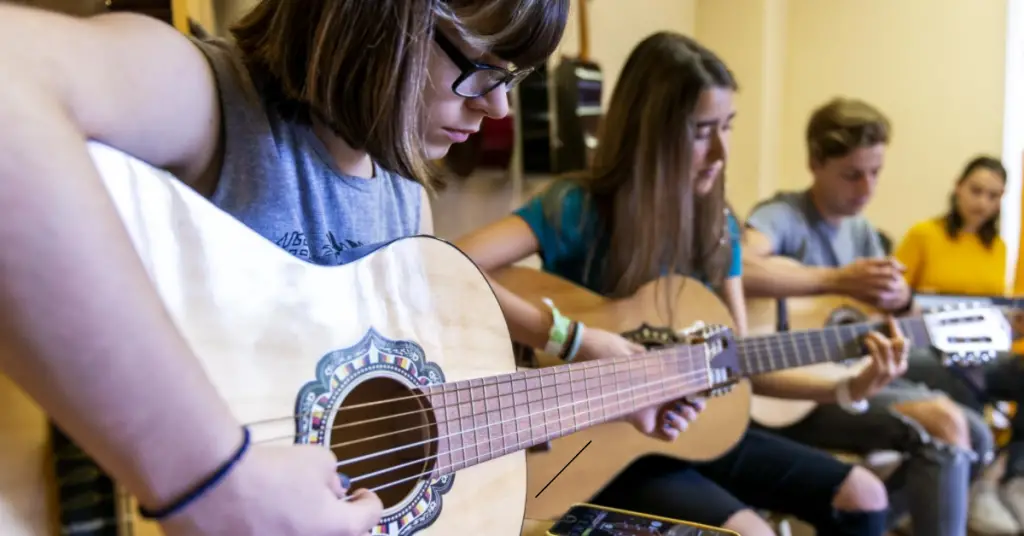
You’ll explore various disciplines in art education, including visual, performing, media , and contemporary art .
These fields allow you to understand creative expression better and develop your artistic abilities.
Visual art encompasses traditional fine arts such as drawing, painting, printmaking, photography, and sculpture.
You’ll also delve into media arts involving film, graphic communications, animation, and emerging technologies.
The curriculum includes architectural, environmental, and industrial skills like urban, interior, and product design [5] .
On the other hand, performing arts consist of disciplines like theatre, dance, and music. These fields emphasize movement, expression, and storytelling, often utilizing the human body as the primary instrument.
Similarly, media arts focus on the fusion of technology and artistic mediums, like film, sound, and digital art .
Contemporary art is a vital aspect of art education as it helps you examine the current trends and societal issues shaping today’s art world.
This can involve exploring the works of present-day artists, situating them within a broader cultural context, and critically analyzing their messages and methodologies.
Ultimately, by studying visual and performing arts, you will foster your critical thinking and creative skills, preparing you to contribute to the global art community.
Art Education Programs
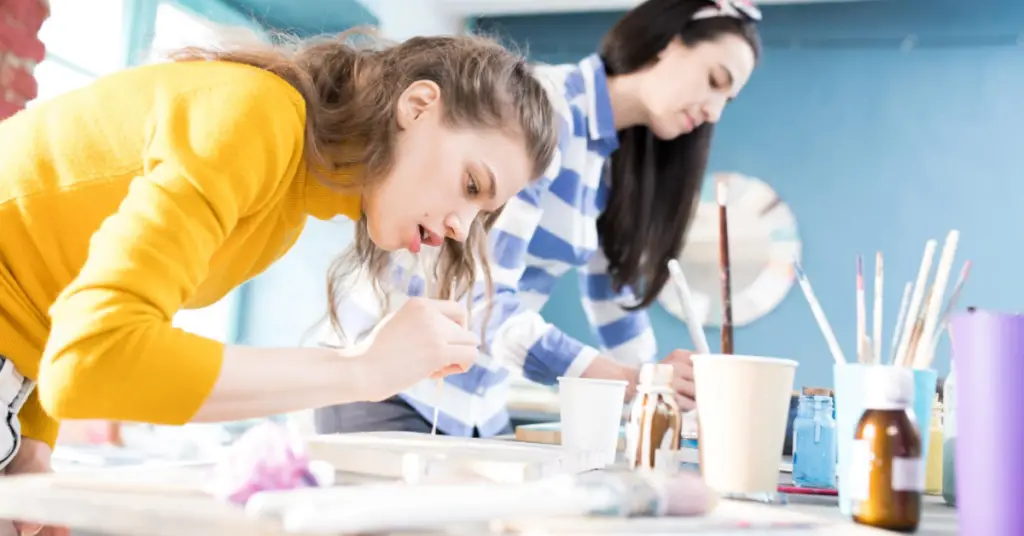
Art education programs play a crucial role in developing well-rounded students.
As a part of these programs, you’ll find courses encompassing various disciplines such as dance, music, theatre, and visual arts like drawing, painting, sculpture, and design works.
A Master of Arts degree in art education can help you advance your career and acquire expertise in art theory, practice, and pedagogy, enabling you to transform learning through creative engagement.
An art education program can give you the knowledge and skills to become an effective teacher and advocate for arts education in K-12 schools, community arts organizations, and other educational settings.
Many art education programs focus on building stronger communities and fostering strategic alliances that propel the arts forward as a solution.
As the demand for art education rises, it is essential to understand the benefits it offers to students.
When considering the different art education programs available, some focus on community arts, while others prioritize education in specific disciplines.
In community arts programs , participants often collaborate on art projects, emphasizing community involvement and social change. These programs aim to develop critical thinking, problem-solving, and communication skills.
Art education often plays a vital role in graduation programs, with many states having arts requirements for high school graduation.
This ensures that students are exposed to various art forms during their education, helping them appreciate diverse perspectives and enhance their creativity.
Enrolling in a reputed art school can help you access top-notch facilities, dedicated faculty members experienced in various art forms, and networks of fellow artists and creative professionals.
In summary, art education programs provide comprehensive exposure to the arts, building a solid foundation for creativity and critical thinking.
Participating in these programs contributes to developing your artistic skills and overall personal and intellectual growth.
Arts Integration in Education
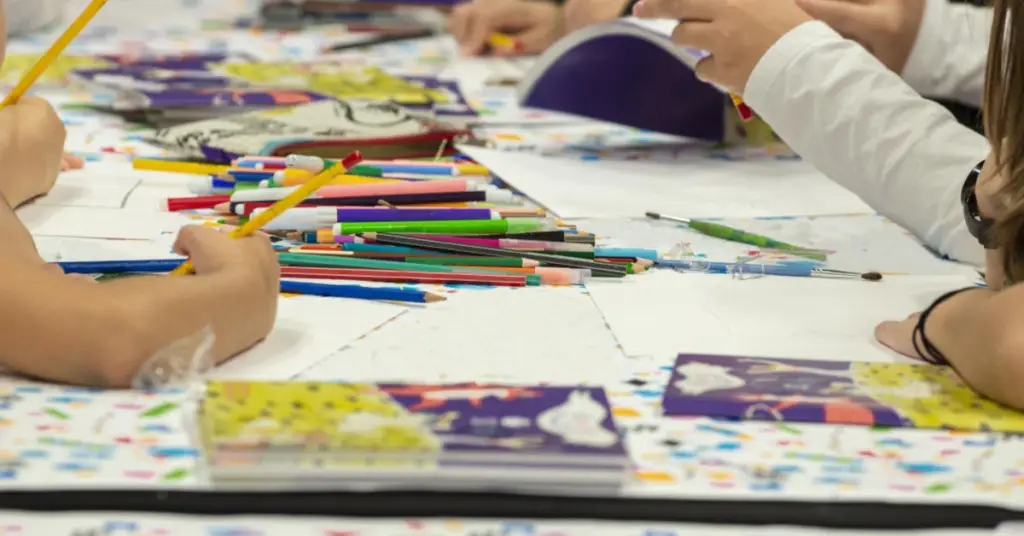
Arts integration is a teaching approach where content standards are taught and assessed equitably in and through the arts.
Through this interdisciplinary method, you can effectively incorporate multiple disciplines into your learning environments, enriching the core curriculum and enhancing students’ overall educational experience.
In an arts-integrated classroom, students construct and demonstrate understanding through various art forms.
This creative process connects an art form with another subject area, meeting evolving objectives and fostering a well-rounded educational experience.
For instance, you could combine visual arts with mathematics, helping students grasp geometric concepts in a hands-on, engaging way.
As a teacher looking to implement arts integration, collaboration is critical. Start by meeting with other educators to plan lessons using backward design.
This method focuses on the desired outcome, like your culminating event, exhibition, or final artwork , and builds the curriculum to achieve that goal.
This approach ensures all subject areas are effectively woven together and essential content is included in the learning process.
Implementing arts integration in your classroom has several benefits. It offers an innovative way to engage students and provides opportunities for differentiated instruction, reaching students with varying learning styles and abilities.
Connecting subject areas through the arts can create a more inclusive, diverse, and stimulating learning environment for all students.
So, as you strive to create a more dynamic and comprehensive educational experience for your students, consider exploring arts integration in your curriculum.
By merging multiple disciplines and fostering creativity, you can empower students and make learning more engaging, diverse, and meaningful.
Student Outcomes in Art Education
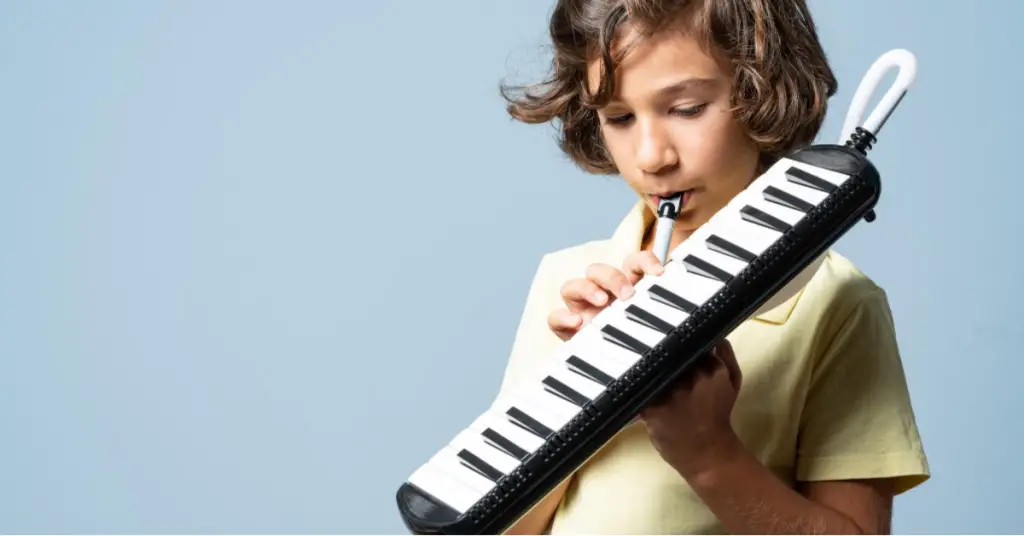
In art education, students experience various improvements in their learning outcomes.
By participating in arts programs, students can develop their ability to think creatively and critically, solve problems, and work effectively in teams.
When students engage in art education, they can nurture their creative thinking. Creative thinking is essential for creating innovative solutions to problems and uniquely expressing one’s ideas.
By honing their creative skills, students become more capable of generating new ideas and adapting to different situations.
Art education also fosters critical thinking abilities. As students analyze and interpret works of art, they learn to evaluate different perspectives, assess the quality of arguments, and make informed decisions.
This more profound understanding of artistic meaning helps students develop a more nuanced approach to interpreting the world around them.
Problem-solving is another critical learning outcome associated with art education. Students who engage in art projects often face complex challenges that require them to find solutions by experimenting with various techniques and materials.
Through this process, students become comfortable tackling complex problems, which can benefit them in other areas of their education and life.
Lastly, art education enhances teamwork skills. Many art projects require students to collaborate with others, either by working on a joint project or by critiquing each other’s work.
Students learn to communicate effectively , listen to others, and contribute to a larger goal by engaging in these collaborative activities.
Students can experience growth in these essential skills by participating in art education.
Creative thinking, critical thinking, problem-solving, and teamwork are all crucial outcomes of a well-rounded art education, providing students with a strong foundation for future success.
Art Practice and Learning Opportunities
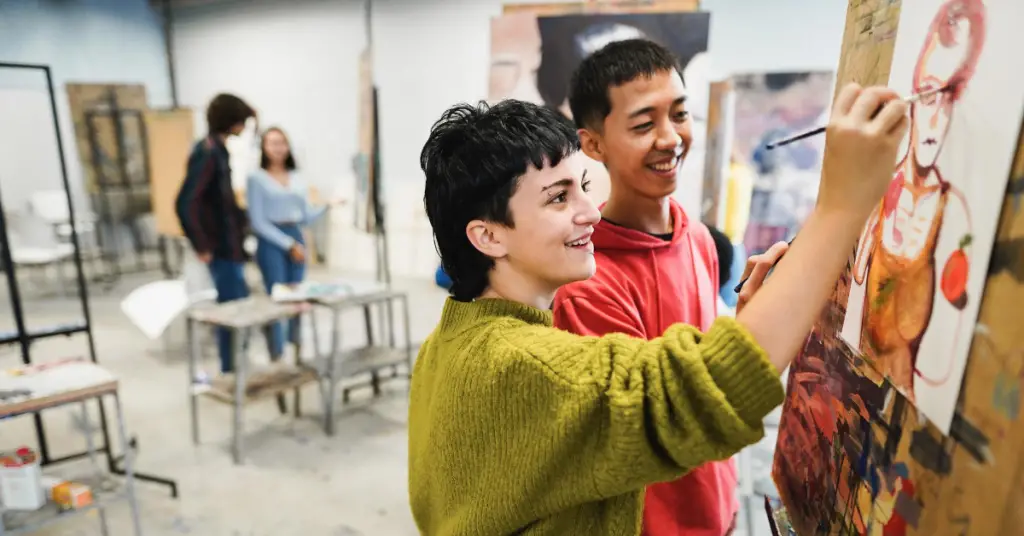
Studio Practice
In art education, studio practice is a crucial component that enables you to develop your technical skills and artistic abilities.
Engaging in hands-on experiences within a studio allows you to explore various materials, techniques, and creative processes.
This active participation not only refines your skills but also fosters a deeper understanding and appreciation of the visual arts.
Practical Experiences
Practical experiences in art education provide invaluable opportunities to apply your artistic knowledge in real-life situations.
These experiences can range from collaborating on group projects, participating in workshops, or attending masterclasses led by experienced artists.
Through these engagements, you gain insights into different perspectives, expand your creative horizons, and enhance your interpersonal skills.
Art Making and Creativity
Art-making and creativity go hand-in-hand in the realm of art education. By actively participating in creative activities, you develop a stronger sense of self-expression and expand your ability to generate innovative ideas.
Engaging in imaginative and artistic practice also promotes critical thinking, problem-solving, and visual communication skills, which can benefit you in various aspects of life.
Embracing art-making and creativity fosters a lifelong love of learning and enriches your educational experience.
The Impact of Art Education on Early Childhood Development
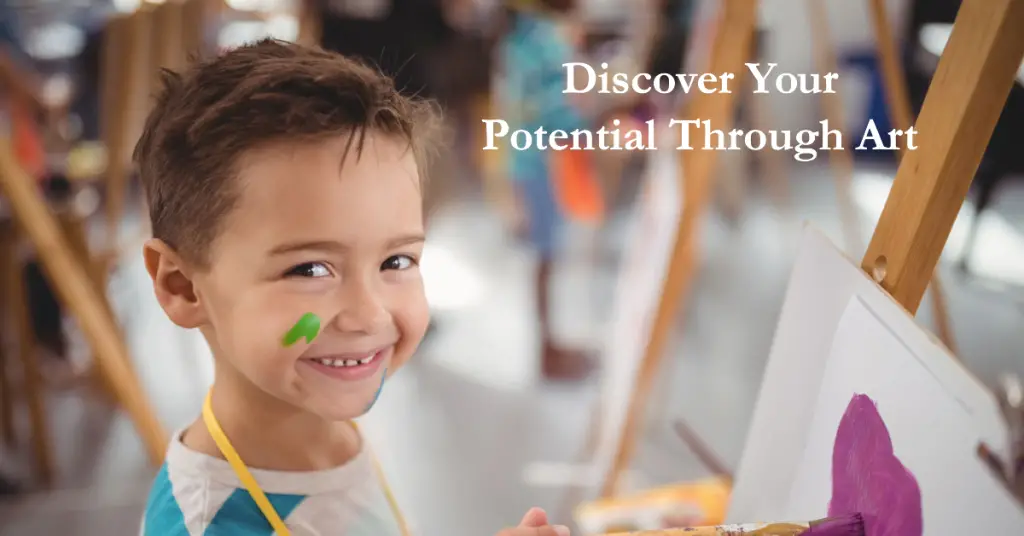
In early childhood education, the integration of art plays a significant role in the development of young artists.
Art education can be especially beneficial in the early years, as it helps to develop a strong foundation for future learning and overall growth.
When you introduce young children to the art world, you help foster their social and emotional development .
Various studies have demonstrated the value of incorporating artistic practices into early childhood education programs [6] .
Encouraging young learners to engage in imaginative activities can improve social interaction, self-expression, and emotional regulation skills.
It is essential to believe that art education provides a unique opportunity for children to explore their creativity and learn to appreciate the beauty in their surroundings.
Children develop a sense of curiosity and wonder that translates into a lifelong love of learning by participating in diverse artistic experiences, such as painting, drawing, sculpture, and music.
As you support your child’s artistic journey, consider providing various materials and opportunities for them to engage in creative exploration.
By offering a safe and nurturing environment where children can experiment and express themselves freely, you can develop critical skills such as problem-solving, spatial awareness, and fine motor coordination [7] .
In conclusion, as an advocate for your child’s education, it is essential to consider the impact of art education on their early childhood development .
By embracing the power of creativity and artistic expression, you can ensure that your child experiences a well-rounded and enriching educational journey with a solid foundation for future success.
Art Education Beyond the Classroom
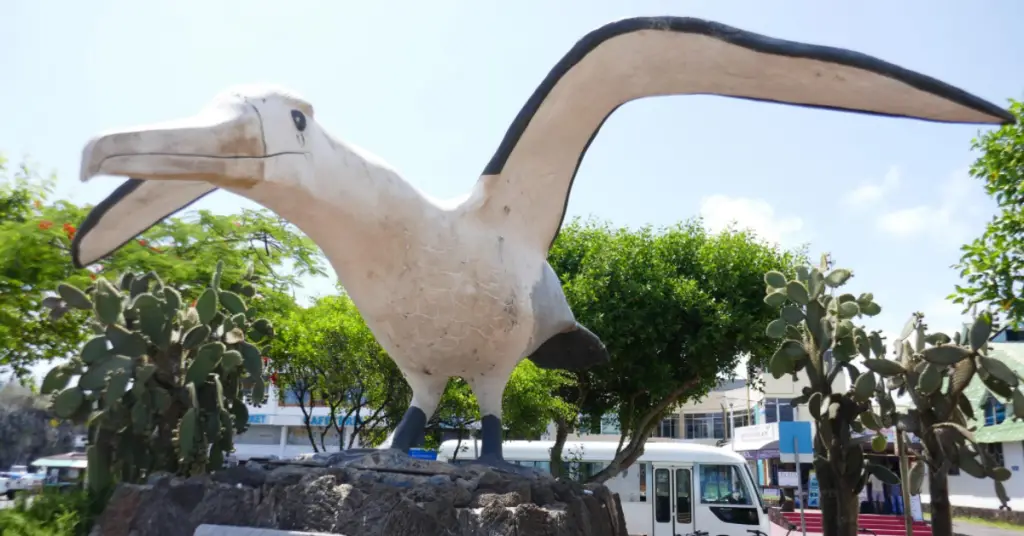
Art education is not confined to the walls of a classroom. Many opportunities for growth and development exist beyond traditional art education settings, such as museum education, arts organizations, and community arts programs.
Museums are a great place to expose yourself to various art forms and expand your understanding of different artistic styles and periods.
By participating in museum education , you can enhance your appreciation for these masterpieces and gain a deeper connection to the cultures they represent.
While in-person art classes offer a distinct experience, joining art organizations can provide valuable knowledge and opportunities to network with other artists and professionals .
These groups often provide workshops, events, and resources to help you grow as an artist.
Community arts programs are another excellent way to pursue your artistic passions. Engaging in community arts helps bridge the gap between formal art education and everyday creative expression.
It is a chance for people of all ages and skill levels to collaborate, learn from each other, and make an impact in their local neighbourhoods.
Art education can also benefit non-arts fields by fostering creativity, problem-solving, and collaboration skills.
Brainstorming techniques, like collaborative sketching and mind-mapping, can be used across various industries to generate new ideas and improve decision-making.
Remember, art education is not just about painting and drawing; it is a flexible, powerful tool to help you develop your unique creative voice and become a better problem solver.
Take advantage of the opportunities available, explore new avenues, and let your art flourish beyond the classroom.
Future Perspectives in Art Education

Art education plays a vital role in shaping the creative minds of the future.
With upcoming trends and advancements, arts-based methods are being integrated into various aspects of learning, ensuring a more comprehensive and innovative approach to education.
One key aspect of future perspectives in art education is how it prepares students for the evolving world.
Including artistic practices in curriculums allows them to develop critical thinking, problem-solving, and communication skills.
Engaging in creative arts fosters a deep understanding of different perspectives, promoting empathy and tolerance.
Moreover, the integration of new concepts and innovations in the field of art education will provide unique opportunities for students to thrive.
For instance, using digital technologies and online platforms can open doors to new methods of exploration and collaboration, enabling learners to connect with experts from various disciplines and backgrounds.
The embrace of technology in art education will significantly enhance how you approach creative projects, equipping you with the necessary tools to master emerging forms of artistic expression.
Furthermore, the future of art education aims to focus on the importance of art in addressing social and emotional well-being.
Research indicates that engaging in creative endeavours helps students express themselves safely and positively, ultimately benefiting their mental health.
In conclusion, as you embrace the future perspectives in art education, you stand to benefit from integrating arts-based methods, new concepts, and a focus on holistic development.
By being involved in this ever-evolving field, you will be better prepared for the challenges ahead, fostering creativity and innovation that can significantly impact the world.
Final Thoughts on What is Art Education
As we conclude our exploration of art education, we are left with a deep appreciation for the power of creativity and self-expression.
Art education is not just about learning how to draw or paint; it’s about developing critical thinking skills, emotional intelligence, and empathy.
It’s about preparing students for a future where innovation and creativity are more crucial than ever before.
Art education can change the world by giving students the tools and skills they need to succeed in life and work.
So let us continue to support and advocate for art education, and let us never forget the profound impact it can have on individuals, communities, and society.
About the author
We are a team of creatives dedicated to sharing tips, tricks, and step-by-step guides on all things related to art and design. Check out our blog for a list of all the awesome things we post!
Leave a Reply Cancel reply
Your email address will not be published. Required fields are marked *
Save my name, email, and website in this browser for the next time I comment.
Subscribe to newsletter
related posts
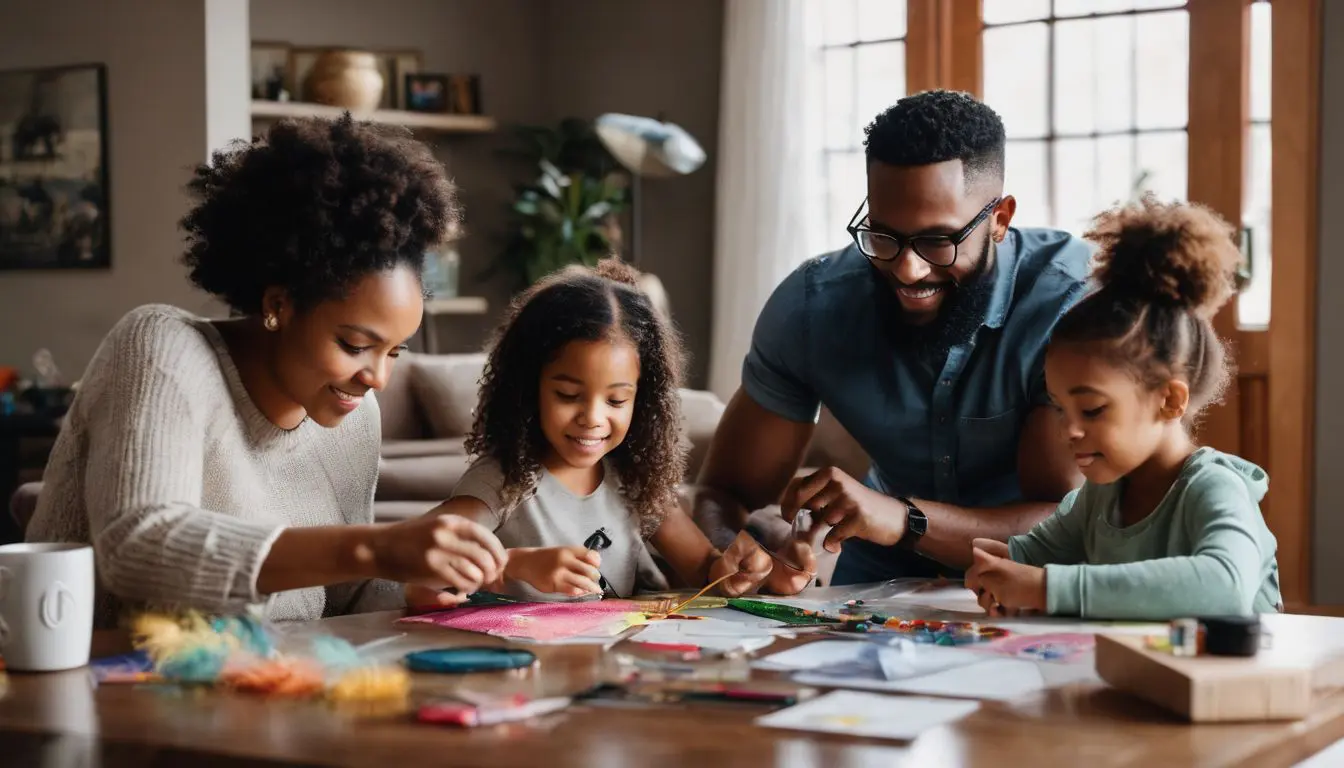
10 DIY Craft Ideas for the Home to Add Personal Touches
Whether you’re looking to craft a statement piece for your…
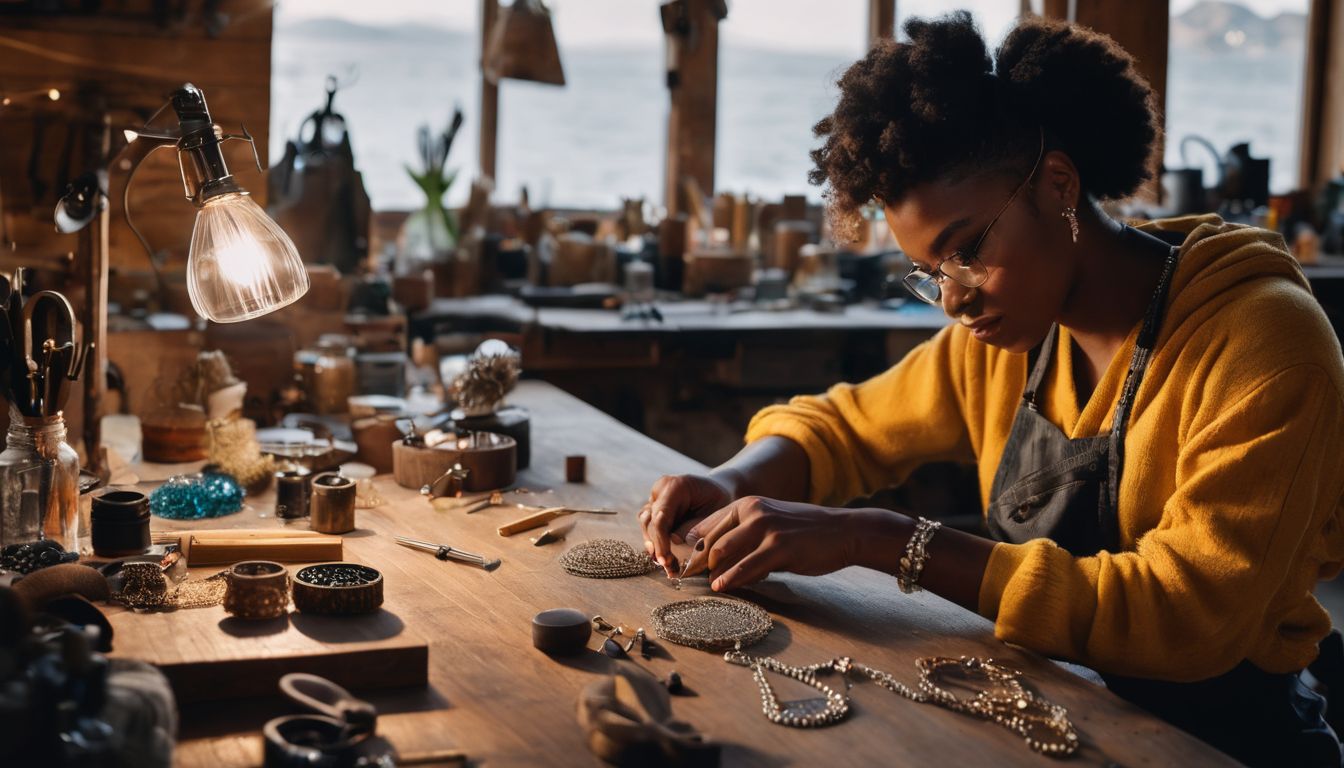
Top 24 DIY Craft Ideas to Sell and Make Money from Home
DIY Craft Ideas to Sell Dreaming of turning your crafty…

DIY Craft Ideas For Gifts: 50 Handmade Projects for Loved Ones
Finding that perfect gift for a special someone can often…
Privacy Overview

An official website of the United States government
The .gov means it’s official. Federal government websites often end in .gov or .mil. Before sharing sensitive information, make sure you’re on a federal government site.
The site is secure. The https:// ensures that you are connecting to the official website and that any information you provide is encrypted and transmitted securely.
- Publications
- Account settings
Preview improvements coming to the PMC website in October 2024. Learn More or Try it out now .
- Advanced Search
- Journal List
- Front Hum Neurosci
The Role of the Visual Arts in Enhancing the Learning Process
Christopher w. tyler.
1 Smith-Kettlewell Brain Imaging Center, The Smith-Kettlewell Eye Research Institute, San Francisco, CA, USA
Lora T. Likova
With all the wealth of scientific activities, there remains a certain stigma associated with careers in science, as a result of the inevitable concentration on narrow specializations that are inaccessible to general understanding. Enhancement of the process of scientific learning remains a challenge, particularly in the school setting. While direct explanation seems the best approach to expedite learning any specific subject, it is well known that the ability to deeply absorb facts and concepts is greatly enhanced by placing them in a broader context of relevance to the issues of everyday life and to the larger goals of improvement of the quality of life and advancement to a more evolved society as a whole. If the sciences can be associated with areas of artistic endeavor, they may be viewed as more accessible and favorable topics of study. There is consequently an urgent need for research in the relationship between learning and experience in the arts because both art education and scientific literacy remain at an inadequate level even in economically advanced countries. The focus of this review is the concept that inspiration is an integral aspect of the artistic experience, both for the artist and for the viewer of the artwork. As an integrative response, inspiration involves not only higher cortical circuitry but its integration with the deep brain structures such as limbic system and medial frontal structures, which are understood to mediate the experience of emotions, motivational rewards, and the appreciation of the esthetic values of the impinging stimuli. In this sense, inspiration can turn almost any occupation in life into an avocation, a source of satisfaction in achieving life goals. Conversely, when inspiration is lacking, the motivation to learn, adapt, and prosper is impeded. Thus, inspiration may be viewed as a potent aspect of human experience in linking art and science.
“How can we develop techniques in learning to engage the emotions? Learning should not be driven by fear but by desire. Why are the arts considered separate from the sciences? What were the first arts? How did the scientific enquiring mind arise?” d’Amboise ( 2008 )
To a significant extent, our future will be determined by how we deal with the unprecedented explosion of knowledge with which we are presently confronted. In a world of hyper technological advancement, there tends to be an intense focus on the technical and scientific aspects of the world around us, with a consequent neglect of other aspects of life that can enhance the learning of complex material, social skills, and overall quality of life. Although more information has been generated in the past century than in all of human history before it, the gulf between science and the arts has grown ever greater, and students are identified as being of one type or the other early on, creating self-fulfilling prophesies of their life trajectories. Even with all the wealth of scientific activities, there remains a certain stigma associated with careers in science, as a result of the inevitable concentration on narrow specializations that are inaccessible to general understanding. This disconnect between art and science may have had unintended consequences. Apart from the danger of creating a generation of scientists who lack an esthetic sense or appreciation of metaphorical expression, and of artists without scientific literacy, opportunities for cross-pollination, and mutual benefits are being squeezed out of contention by the professional demands.
Studies of Arts, Creativity, and Learning
Despite the divergence between arts and sciences, a growing body of quantitative research suggests that the learning of science may be enhanced by relationships with the arts. Contemporary research is beginning to explore explicit neuroscientific hypotheses concerning the effects of activities such as, drawing, visual esthetics, and dance observation.
Visual art learning is reliant on a complex system of perceptual, higher cognitive, and motor functions, thus suggesting a shared neural substrate and strong potential for cross-cognitive transfer in learning and creativity. Within just a few weeks, for example, human infants can imitate and action such as sticking out the tongue in response to someone sticking out his tongue at them – how does the infant know just what motor action plans to implement based only on a visual input? Mirror neurons may account for this ability, translating visual input to motor output, underlying a connection between visual arts and movement, and the auditory arts and music. From pre-historical times, visual art has been a form of communication deeply imprinted in human nature; the act of experiencing art and esthetic appreciation in the “receiver” also has the power of cross-cognitive effect any time during individual development. Compositional universals have been shown to govern the design of visual artworks across ages and cultures (Arnheim, 1988 ; Tyler, 1998 , 2007 ; Ramachandran and Hirstein, 1999 ).
The ability to tolerate ambiguity and uncertainty during the creative process is an important mental trait. The tolerance for ambiguity is also an important attribute in the learning of science in order to deal with the complexities and ambiguities of scientific knowledge. Unlike its popular stereotype, science is replete with ambiguities and contradictions that have to be resolved in order for learning to proceed. Allusive thinking by appearance alone lends intuitive judgment to overly rational thought and can lead to the discovery of meaningful metaphors (Tucker et al., 1982 ; Smolucha and Smolucha, 1985 ; Peterson, 1993 ). This type of thinking could be developed with focused visual education methods and its applicability shown in a variety of academic disciplines.
In terms of accessible art practice, prior research on neurological patients has shown a conceptual link between drawing and language (Gainotti et al., 1983 ; Swindell et al., 1988 ; Kirk and Kertesz, 1989 ), and these researchers hypothesized that drawing may access the semantic system in a manner that improves cognitive access. Studies exploring the issue of mechanisms shared between different cognitive modalities revealed mechanisms that are used to process spatial representations in the visual modality, are shared with other modalities, such as the processing of pitch in music (Douglas and Bilkey, 2007 ). These findings have implications not only for scientific learning, but also for learning, pedagogical principles, and general social and educational policies.
The Need for Learning Enhancement
The enhancement of learning remains a challenge, particularly in the school setting. While direct explanation seems the best approach to teaching any specific subject on the curriculum, it is well known that the ability to absorb reams of facts and concepts is greatly enhanced by placing them in a broader context of relevance to both the issues of the quality everyday life and the larger goals of human advancement to a more evolved status of society as a whole. It is these larger goals that evoke the need for research in the relationship between learning and experience in the arts. The need is urgent because arts education and scientific literacy remain at a low level in the U.S. and educational interventions are sorely deficient. To the extent that the sciences can be associated with relevant areas of artistic endeavor, they may be viewed as more accessible and more favorable as a topic of study. Moreover, there is an increasing level of neuroscience research that supports the idea of enhancing transfer of learning abilities from the arts to other cognitive domains.
All too often, the arts are marginalized in our schools. In response to this marginalization, educators have sought to justify the arts in terms of their instrumental value in promoting thinking in non-arts subjects considered more important, such as reading or mathematics (Murfee, 1995 ). However, there has been little convincing research that the study of the arts promotes academic performance or elevates standardized test scores (Winner and Hetland, 2000 ). Really to understand whether art learning transfers to academic performance, we need first to assess what is actually learned in the arts and then to specify the mechanisms that underlie a transfer hypothesis. Hetland et al. ( 2007 ) therefore made a qualitative, ethnographic meta-analysis of the kinds of cognitive skills actually taught in the arts classroom, choosing the visual arts as their point of departure. The goal was to understand what is taught, in order to be able to develop a plausible theoretical transfer hypothesis. Eight “studio habits of mind” were identified as being taught in visual arts classes. Students are taught (1) to observe – to see with acuity; (2) to envision – to generate mental images and imagine; (3) to express – to find their personal voice; (4) to reflect – to think meta-cognitively about their decisions, make critical and evaluative judgments, and justify them; (5) to engage and persist – to work through frustration; (6) to stretch and explore – to take risks, “muck around,” and profit from mistakes; and of course (7) to develop craft; and (8) to understand the art world. This work is the first to demonstrate objectively the kinds of thinking skills and working styles taught in arts classes. The group is now investigating the possibility that the skill of envisioning, taught in visual arts classes, may foster geometric reasoning ability.
Studies of Intersensory Connections and the Arts
Neuroimaging studies have revealed that visual arts as well as music engage many aspects of brain function, and involve nearly every neural subsystem identified so far (Zeki, 1999 ; Solso, 2001 ; Brown et al., 2006 ; Cross et al., 2006 ; Levitin, 2006 ; Likova, 2010a , b ). Could this fact account for claims that arts exercise other part of the brain and improve other cognitive abilities? Experience with the visual arts may be expected to produce similar facilitatory effects through the learning of artistic styles (Hess and Wallsten, 1987 ), although there is less formal research on the effect of visual art on learning enhancement in general. The visual system is legendary for its ability to analyze the complex interplay among spatial structures in 2D and 3D space. These powerful analytic capabilities are far in advance of what can be achieved by even the most sophisticated computer algorithms, but they are central to any achievement in visual arts (Kubovy, 1986 ; Gombrich, 1994 , 2000 ; Tyler, 1998 ; Ramachandran and Hirstein, 1999 ; Livingstone, 2002 ). Indeed, neuroscience studies have begun to develop important techniques for the study of the neural circuitry mediating the appreciation of esthetic qualities (Zeki, 2001 , 2004 ; Kawabata and Zeki, 2004 ; Tononi, 2004 ). Brain imaging studies have identified the cortical substrates for the encoding of a variety of art-related properties, from primary figure/ground categorization (Likova and Tyler, 2008 ), and long-range symmetry properties (Tyler, 1994 ; Norcia et al., 2002 ; Sasaki et al., 2005 ; Tyler et al., 2005 ), through facial expressions (Kanwisher et al., 1997 ; Zaidel and Cohen, 2005 ; Chen et al., 2006 ) to dynamic athletic performances such as dance (Brown et al., 2006 ; Cross et al., 2006 ; Brown and Parsons, 2008 ; Likova, 2010a , 2012a , b ). Such experience with the complex structures utilized in the visual arts is likely to make an important contribution to the enhancement of learning in all fields of endeavor.
The analysis of such complex spatial and dynamic spatial structures is one of the key aspects underlying the creativity of advanced thinking. Creative learning is a key aspect of the human thought processes that crosses many domains of neural functioning (Gardner, 1982 ; Glover et al., 1989 ; Csikszentmihalyi, 1997 ). The role of emotional evaluation in the cognitive processes underlying creativity has been emphasized by Damásio ( 1994 ), a theme that he has elaborated into other domains of human endeavor in subsequent work. Indeed, Dietrich ( 2004 ) has proposed that there are four basic types of creative learning, each mediated by a distinctive neural circuit. Creativity may arise either from a basis of deliberate control or from spontaneous generation. When the result of deliberate control, the prefrontal cortex instigates the creative process; the spontaneous generation may arise from activation of the temporal cortex. Both processing modes, deliberate and spontaneous, can guide neural computation in structures that contribute emotional content and in those that provide cognitive analysis, yielding the four basic types of creativity. This theoretical framework systematizes the interaction between knowledge and creative thinking, and how the nature of this relationship changes as a function of domain and age.
Defining art as a communicative system that conveys ideas and concepts explaining why it is possible for the same brain structures that supports other cognitive functions such as human language to be involved in arts such as music or drawing. This characterization presuppose millions of years of brain evolution and biological adaptive strategies. As a multidisciplinary communicative system, the arts provide an ideal platform for learning about the pleasure of knowing, which in turn provides the motivational inspiration to explore further, to ask questions, analyze and synthesize, and engage in convergent and divergent thinking.
Learning and Active Involvement in the Arts
The current expansion of interest in the science of learning motivates exploration of the expanded possibilities of conceptual interrelationships offered by training in the arts. The difficult task of understanding and effectively enhancing learning across disciplines, ages, and cultural specificities is a high priority throughout the world, and may be particularly benefited by training in and even exposure to the arts.
Contemporary research is beginning to explore new neuroscientific hypotheses concerning the effects of learning in activities such as musical performance, drawing, visual esthetics, and dance, on learning in non-artistic domains. Neuroimaging studies have started to reveal that the process of drawing shares cortical substrate with writing, access to the semantic system, memory, naming, imagery, constructional abilities, and the ability to estimate precise spatial relations. Learning in the domain of visual art, in particular, is reliant on a complex system of perceptual, higher cognitive, and motor functions, suggesting a shared neural substrate and strong potential for cross-cognitive transfer in learning and creativity. For instance, case study by Solso ( 2001 ) has revealed significant processing differences between the brains of a professional artist and a novice during drawing in the scanner; the comparative analysis of the activation patterns suggests a more effective network of cognitive processing for the brain of the artist. Results consistent with some of these conclusions have also been reported on the basis of differences in alpha rhythm as a function of level of artistic training (Kottlow et al., 2011 ). Recent neuroimaging studies in our lab have addressed the process of learning to draw by comparing BOLD fMRI brain activity before and after training to draw, and correlating it with the advance in drawing performance. These studies, run in diverse groups of people – from sighted to totally blind from birth, were made possible by a unique Cognitive–Kinesthetic Training Method that Likova developed for learning to draw even under the condition of total blindness. Indeed, in blind subjects who have never had any visual input, training in a spatial drawing skill generates dramatic utilization of occipital lobe resources as early as the primary “visual” cortex for this purely spatial task (despite the complete lack of any visual experience), as well as a reorganization in a network of temporal, parietal, and posterior frontal lobe regions consistent with its multifunctional role (Likova, 2010a , b , 2012a ). An additional assessment showed a significant improvement in generic spatial and spatiomotor cognition abilities as well.
Another approach to the neuroanatomical underpinnings of visual art production and appreciation comes from observations of brain damage in established artists have been described (Zaidel and Cohen, 2005 ), which also provides insight into the relationship between art and other communicative displays by biological organisms, and the role that beauty plays in art. Art should be regarded as a cognitive process in which artists engage the most perplexing issues in present experience and try to find a way of symbolizing them visually so that they can bring coherence to their experience. In consequence, the definition of art is constantly changing in relation to its time. Understanding how we symbolize our experience, how we use symbolic form to organize our psyches, and what are the neuroanatomical corollaries to these processes, will have obvious implications for learning. From pre-historical times, visual art has been a form of communication deeply imprinted in human nature. Compositional universals govern the design of visual artworks across ages and cultures, and the act of art experience and appreciation in the “receiver” also has the power of cross-cognitive effect during any time point in individual development. These findings have implications not only for biomedical sciences, but also for learning, pedagogical principles, and general social and educational policies.
Another key aspect that the arts bring to the mix is the creativity involved in the generation of the art work, which was analyzed into its experiential components by Wallas ( 1926 ), involving
- (i) preparation by focusing on the domain of problem and prior approaches to its solution,
- (ii) incubation by subconscious processes without explicit activity related to the problem,
- (iii) intimation that a solution is on its way,
- (iv) insight into a novel solution to the problem,
- (v) verification and elaboration of the details of the solution.
The Wallas ( 1926 ) account is largely cognitive, emphasizing the processes involved in reaching the solution to the problem. He does not specifically address the motivational aspects of how these processes would enhance the learning experience, except in the implied rewardingness of the insight (or moment of illumination) of the problem solution. In Wallas’s scheme, the preparation stage corresponds to much of the learning required in the educational process, but what is not mentioned is the inspiration that characterizes the motivation for people to take up avocations and hobbies, i.e., the sense of enthusiasm and zeal that some domain of activity is of particular interest or relevance to a person. It is the inspiration, making the preparation stage intrinsically rewarding rather than a painful grind, can make all the difference to the learning experience.
A fine example of the creative moment in science was described by Andrew Feinberg in a keynote lecture on the expanding field of epigenetics (Seay, 2010 ). When on an architectural visit to Westminster Abbey, he noticed that adjacent to Isaac Newton’s grave is a small plaque indicating Paul Dirac’s grave (who was awarded the Nobel Prize for advances in the stochastic theory of quantum mechanics). Next to it is Charles Darwin’s grave, with no adjacent plaque, but the juxtaposition gave him the epiphany that the modern version of Darwin’s theory would be the stochastic variation in epigenetic processes that Feinberg subsequently developed into a major scientific breakthrough. In this case his preparation was many years of scientific research, but it was the foray into the non-scientific architectural tour that gave rise to the novel insight that took his work to the next level.
Arts, Learning, and Inspiration
Another key aspect of learning that can be facilitated by the arts is the emotional inspiration to be involved in the learning process. Inspiration is an integrative mental function at the intersection of (a) cognitive, (b) emotional, and (c) conative processes. (Conative processes are those goal-directed functions relating to the classic third component of the mind championed by Kant, 1788 , and McDougall, 1923 , constituting the desire, ambition, and will.) As such, inspiration is an aspect of mental experience that involves not just cortical circuitry but its integration with the limbic system and medial frontal structures that are understood to mediate the experience of emotional desires, motivational rewards, and the appreciation of the integrative esthetic values of the impinging stimuli (Damásio, 1994 ). This system goes beyond classical concepts of beauty to incorporate the elegance of theoretical concepts, the appreciation of the emotive power of the diverse array of post-modern art installations, the grace and dynamism of athletic performances, the economy and evocativeness of political addresses, the interconnected synergy of natural ecological systems, and innumerable other examples throughout the sphere of our world knowledge. In a sense, inspiration can turn almost any occupation in life into an avocation, a source of satisfaction in achieving life goals. It is when individuals feel themselves part of larger enterprise that they are inspired to learn, to achieve, and to pursue a meaningful career. Conversely, when their job involves performing the same daily drudgery, inspiration is lacking and they lack motivation to learn, adapt, and prosper.
Thus, inspiration is a component of the emotional response to stimuli and actions, when they are perceived as uplifting or emotionally rewarding. As such it should be expected to be mediated by the limbic system and the reward systems of the brain. An impressive array of neural processing appears to be dedicated to the extraction of reward-related information from environmental stimuli and use of this information in the generation of goal-directed behaviors. In particular, the differential characteristics of activations seen in the dopaminergic mesencephalon, the dorsal striatum, and the orbitofrontal cortex provide distinct examples of the different ways in which reward-related information is processed. Moreover, the differences in activations seen in these three regions demonstrate the different roles they may play in goal-directed behavior (Hollerman et al., 2000 ). The dopaminergic systems appear to reflect a relatively pure signal of a reward prediction error. The representation of goal-directed behaviors may involve the basal ganglia of the putamen, globus pallidus, and striatum (Acevedo et al., 2011 ; Paulmann et al., 2011 ), where different subpopulations neurons differentiate between rewarding and non-rewarding outcomes of behavioral acts and are activated at different stages in the course of goal-directed behaviors, with largely separate populations activated following presentation of conditioned stimuli, preceding reinforcers, and following reinforcers (Apicella et al., 1991 ; Hollerman et al., 2000 ). Moreover, unlike the dopamine system, much of the striatal system responds to predicted rewards (Salimpoor et al., 2011 ). These activations could serve as a component of the neural representation of the appropriate goal-directed behaviors in response to the environmental contingencies associated with desirable goals (Engelmann et al., 2009 ). Finally, neuronal activations in the orbitofrontal cortex appear to encode the relative motivational significance of different rewards.
Further insights into this reward circuit may be obtained from psychopharmacological studies. In particular, cocaine is known not simply for inducing a sense of reward, but for producing an enhanced (though illusory!) sense of well-being, capability, and quasi-omnipotence. These are the core experiences of inspiration, which can evidently be accessed by this biochemical substitute. Functional imaging studies of focal signal increases for acute cocaine infusion are found in such limbic and basal ganglia structures as the caudate, putamen, basal forebrain, nucleus accumbens, thalamus, hippocampus, and parahippocampal gyrus; in the insular, subcallosal, cingulate, lateral prefrontal, temporal, parietal, and striate/extrastriate cortices; and in the midbrain structure of the ventral tegmentum and the pons (Breiter et al., 1997 ). Similarly, some of these areas are also implicated in the responses to a romantic image (such subcortical structures as the caudate nucleus, globus pallidus, putamen, lateral thalamus, subthalamic nuclei, and ventral tegmental area; Bartels and Zeki, 2004 ; Aron et al., 2005 ; Acevedo et al., 2011 ). Conversely, acute cocaine infusion produced signal decreases in the temporal pole, medial frontal cortex, and amygdala (Breiter et al., 1997 ).
As indicated by these studies, activation of the frontal reward network should not be treated as a unitary mental function, since reward in human experience incorporates a diversity of aspects. In particular, it is worth distinguishing four mutually complementary domains of reward – the appetitive, cognitive, social/conative, and inspirational aspects of reward. The first three aspects may be seen as corresponding to the Freudian mental subdivisions of id, ego, and superego functions – i.e., respectively those of hedonic gratification, of the effectiveness of the reward strategies, and of the goal-directed achievements of the performer in relation to their place in society (such as course credits for completing the task!). However, the fourth aspect is beyond all these, and relates to how the performer feels about him/herself as a person, more in the realm of Maslow’s concept of self-actualization (in the sense of realizing the potential of what one is capable of doing). Specifically, the concept of inspiration focuses on the experiential rather than the functional aspects of this form of achievement–inspiration describes the feeling or awareness of extending one’s physical or mental operations beyond the previous capabilities to achieve a new or enhanced capability. It is this expansive or pluripotent sense of the inspirational feeling that make it so significant as a motivational component of human endeavor.
The need for inspiration is something that is well understood by the best teachers, who have the knack of conveying it to their students. However, there is continual pressure to cover specified ranges of exacting material, making it inappropriate for the learning environment to be nothing but entertainment. Thus, the happy medium between sufficient inspiration and the requisite level of proficiency is difficult to achieve, and is made particularly difficult by the wide range of cognitive styles exhibited by the population of learners. There is a strong need to identify the effective motivational styles and the dimensionality of the domain of motivational inspiration, in order to expand the repertoire of strategies for learning enhancement. Moreover, one such form of inspiration is the opportunity to go beyond the predigested material that is presented to develop original insights and contributions to the domain of interest. This form of creativity can be highly motivating to the learner, who feels part of the enterprise of accumulating the knowledge, rather than a passive recipient of the structured material.
Recommendations for Future Research for the Enhancement of Learning through Art
A recent NSF report has assembled recommendations for research strategies for the enhancement of learning through art (Tyler et al., 2009 ).
Strategic principles
- Art is fundamentally a communicative medium : the processes of creation and appreciation of art constitutes a special kind of communication; thus future research needs to study both the creators of the art and the consumers (enjoyers) of the artistic products; a focus on one or the other alone would be incomplete.
- Such a dual focus is fundamental to understanding and developing theories of how we learn to create and appreciate art . An adequate theory must account for both the holistic and componential factors that contribute to artistic activities.
- Both art learning and art production involve a complex interplay between multiple sensory–motor and higher cognitive mechanisms. To achieve full understanding of the processes involved in any art, as well as the way they influence learning in other domains, the focus of future investigations should not be restricted within one level of the system, but include consideration of the whole complex of interactions between the levels of learning , art creating , and appreciation .
Key research questions
- How can the dimensionality of the domain be scientifically defined in each of the arts? It is imperative to develop standardized measures and vocabulary in the novel field proposed by the Workshop.
- What are the measurable cognitive and biological underpinnings of learning in specific art forms, such as visual arts, music, dance, theater? How can the relative importance of those learning components be quantified and understood in terms of the neurobiological mechanisms?
- What processing “modules” does art learning share with other cognitive functions, in particular such as those known to be involved in learning and creativity in non-artistic domains?
- What are the implicit benefits and cross-cognitive transfer effects of training and experience in the arts? How can the transformative process of the art experience be studied?
- What is plasticity of the component abilities across the lifespan? What is it about art training that helps people become better artists?
- What is it that the learner is actually learning? What factors do musical, visual art, or dance training impart? What is the link between such training and outcomes in language, social, and cognitive functions?
- Inspiration is an aspect of mental experience that involves not just cortical circuitry but its integration with the limbic system and medial frontal structures that are understood to mediate the experience of emotions, motivational rewards, and the appreciation of the esthetic values of the impinging stimuli. What is the mechanism underlying the role of inspiration in long-term learning? How is inspiration related to the mechanisms of attention and reward?
- Neuroscience studies report a class of “mirror neurons” forming a mirror-matching system that responds similarly when an act is performed by the individual studied or when observing a separate person performing the same act. Does the mirror neural system form the neural substrate of the embodied cognition experienced when viewing a work of art? Can the positive or negative valence of the art-induced form of empathy be harnessed to enhance learning in related fields of endeavor?
- Does learning in an art form always “transfer” to learning in science? (e.g., does the learning of drawing foster the ability to learn geometry, or the learning of music foster the ability to learn language or mathematics?) What factors support or invalidate the operation of such a transfer process?
- When the arts are integrated with other related disciplines in schools, is there evidence that learning in these other disciplines enhanced? Does the answer to this question depend upon the type of learner (e.g., learning disabled; typical)?
- There is a need to evaluate the underlying processes to determine what specific mechanisms for such transfer of learning the brain has developed. What are the main principles of learning transfer and how could they be implemented to effectively enhance educational strategies?
Methodological recommendations
- To understand the cross-modal effects of art training, it is necessary to study the basic perceptual processing of the artistic objects that give rise to these experiences. The extent to which different key parameters play a role in the artistic experience should be investigated parametrically, and determine how these functions map onto the spectrum of artistic expertise.
- Non-invasive neuroimaging techniques and transcranial magnetic stimulation to generate a reversible blockage of neural activation should be used to answer the questions of learning transfer, enhanced creativity, and enriched esthetic experience.
- Causal network modeling of the information flow amongst cortical regions should be further employed and provide new insights into the neural mechanisms of brain plasticity, which are important for the development of cognitive training strategies.
- Integration of advanced methods must be employed to measure psychophysiological reactions to the artistic experience. New analytic techniques will be necessary for understanding the whole physiological reaction, and open the opportunity for a converging approaches.
- An appropriate set of standardized measures and vocabulary for studying how non-professionals talk about and describe different aspect of the arts should be developed. Formalization of such categorization is fundamental to any meaningful integrative work.
- Future investigations should recognize that art is a dynamic cognitive process in which the definition of art is constantly changing in relation to its time. A more comprehensive approach should be used to explore the physiological characteristics and learning functions of this inherently chaotic modality.
Conflict of Interest Statement
The authors declare that the research was conducted in the absence of any commercial or financial relationships that could be construed as a potential conflict of interest.
Acknowledgments
This research was supported by NSF/SLC Grants #0824762 to C.W. Tyler and #0846430 to L.T. Likova.
- Acevedo B. P., Aron A., Fisher H. E., Brown L. L. (2011). Neural correlates of long-term intense romantic love . Soc. Cogn. Affect. Neurosci. 10.1093/scan/nsq092 [ PMC free article ] [ PubMed ] [ CrossRef ] [ Google Scholar ]
- Apicella P., Ljungberg T., Scarnati E., Schultz W. (1991). Responses to reward in monkey dorsal and ventral striatum . Exp. Brain Res. 85 , 491–500 10.1007/BF00231732 [ PubMed ] [ CrossRef ] [ Google Scholar ]
- Arnheim R. (1988). The Power of the Center . Berkeley, CA: University of California Press [ Google Scholar ]
- Aron A., Fisher H., Mashek D. J., Strong G., Li H., Brown L. L. (2005). Reward, motivation, and emotion systems associated with early-stage intense romantic love . J. Neurophysiol. 94 , 327–337 10.1152/jn.00838.2004 [ PubMed ] [ CrossRef ] [ Google Scholar ]
- Bartels A., Zeki S. (2004). The neural correlates of maternal and romantic love . Neuroimage 21 , 1155–1166 10.1016/j.neuroimage.2003.11.003 [ PubMed ] [ CrossRef ] [ Google Scholar ]
- Breiter H. C., Gollub R. L., Weisskoff R. M., Kennedy D. N., Makris N., Berke J. D., Goodman J. M., Kantor H. L., Gastfriend D. R., Riorden J. P., Mathew R. T., Rosen B. R., Hyman S. E. (1997). Acute effects of cocaine on human brain activity and emotion . Neuron 19 , 591–611 10.1016/S0896-6273(00)80374-8 [ PubMed ] [ CrossRef ] [ Google Scholar ]
- Brown S., Martinez M. J., Parsons L. M. (2006). The neural basis of human dance . Cereb. Cortex 16 , 1157–1167 10.1093/cercor/bhj057 [ PubMed ] [ CrossRef ] [ Google Scholar ]
- Brown S., Parsons L. M. (2008). The neuroscience of dance . Sci. Am. 7 , 78–83 10.1038/scientificamerican0708-78 [ PubMed ] [ CrossRef ] [ Google Scholar ]
- Chen C. C., Kao C., Tyler C. W. (2006). Face configuration processing in the human brain: the role of symmetry . Cereb. Cortex 7 , 1423–1432 10.1093/cercor/bhl054 [ PubMed ] [ CrossRef ] [ Google Scholar ]
- Cross E. S., Hamilton A. F., Grafton S. T. (2006). Building a motor simulation de novo: observation of dance by dancers . Neuroimage 31 , 1257–1267 10.1016/j.neuroimage.2006.01.033 [ PMC free article ] [ PubMed ] [ CrossRef ] [ Google Scholar ]
- Csikszentmihalyi M. (1997). Creativity: Flow and the Psychology of Discovery and Invention . New York: Harper Collins [ Google Scholar ]
- Damásio A. (1994). Descartes’ Error: Emotion, Reason and the Human Brain . New York: Putnam [ Google Scholar ]
- d’Amboise J. (2008). Remarks at the NSF Workshop on Art, Creativity and Learning . Arlington, VA: National Science Foundation [ Google Scholar ]
- Dietrich A. (2004). The cognitive neuroscience of creativity . Psychon. Bull. Rev. 11 , 1011–1026 10.3758/BF03196731 [ PubMed ] [ CrossRef ] [ Google Scholar ]
- Douglas K. M., Bilkey D. K. (2007). Amusia is associated with deficits in spatial processing . Nat. Neurosci. 10 , 915–921 10.1038/nn1925 [ PubMed ] [ CrossRef ] [ Google Scholar ]
- Engelmann J. B., Damaraju E., Padmala S., Pessoa L. (2009). Combined effects of attention and motivation on visual task performance: transient and sustained motivational effects . Front. Hum. Neurosci. 3 :4, 10.3389/neuro.09.004.2009 [ PMC free article ] [ PubMed ] [ CrossRef ] [ Google Scholar ]
- Gainotti G., Silveri M. C., Villa G., Caltagirone C. (1983). Drawing objects from memory in aphasia . Brain 106 , 613–622 10.1093/brain/106.3.613 [ PubMed ] [ CrossRef ] [ Google Scholar ]
- Gardner H. (1982). Art, Mind, and Brain: A Cognitive Approach to Creativity . New York: Basic Books [ Google Scholar ]
- Glover J. A., Ronning R. R., Reynolds C. R. (1989). Handbook of Creativity . New York: Plenum Press [ Google Scholar ]
- Gombrich E. H. (1994). The Image and the Eye: Further Studies in the Psychology of Pictorial Representation . London: Phaidon [ Google Scholar ]
- Gombrich E. H. (2000). Concerning ‘The Science of Art’: commentary on Ramachandran and Hirstein . J. Conscious. Stud. 7 , 17–27 [ Google Scholar ]
- Hess T. M., Wallsten S. M. (1987). Adult age differences in the perception and learning of artistic style categories . Psychol. Aging 2 , 243–253 10.1037/0882-7974.2.3.243 [ PubMed ] [ CrossRef ] [ Google Scholar ]
- Hetland L., Winner E., Veenema S., Sheridan K. (2007). Studio Thinking: The Real Benefits of Visual Arts Education . New York: Teachers College Press [ Google Scholar ]
- Hollerman J. R., Tremblay L., Schultz W. (2000). Involvement of basal ganglia and orbitofrontal cortex in goal-directed behavior . Prog. Brain Res. 126 , 193–215 10.1016/S0079-6123(00)26015-9 [ PubMed ] [ CrossRef ] [ Google Scholar ]
- Kant I. (1788). Critique of Practical Reason , trans. Pluhar W. S. Toronto: Hackett Publishing Company [ Google Scholar ]
- Kanwisher N., McDermott J., Chun M. M. (1997). The fusiform face area: a module in human extrastriate cortex specialized for face perception . J. Neurosci. 17 , 4302–4311 [ PMC free article ] [ PubMed ] [ Google Scholar ]
- Kawabata H., Zeki S. (2004). Neural correlates of beauty . J. Neurophysiol. 91 , 1699–1705 10.1152/jn.00696.2003 [ PubMed ] [ CrossRef ] [ Google Scholar ]
- Kirk A., Kertesz A. (1989). Hemispheric contributions to drawing . Neuropsychology 27 , 881–886 10.1016/0028-3932(89)90011-0 [ PubMed ] [ CrossRef ] [ Google Scholar ]
- Kottlow M., Praeg E., Luethy C., Jancke L. (2011). Artists’ advance: decreased upper alpha power while drawing in artists compared with non-artists . Brain Topogr. 23 , 392–402 10.1007/s10548-010-0163-9 [ PubMed ] [ CrossRef ] [ Google Scholar ]
- Kubovy M. (1986). The Psychology of Perspective and Renaissance Art . Cambridge: Cambridge University Press [ Google Scholar ]
- Levitin D. J. (2006). This Is Your Brain on Music: The Science of a Human Obsession . New York: Dutton/Penguin [ Google Scholar ]
- Likova L. T. (2010a). “Drawing in the blind and the sighted as a probe of cortical reorganization,” in Human Vision and Electronic Imaging XV: Proceedings of SPIE , Vol. 7527 , eds Rogowitz B. E., Pappas T. N. (Bellingham, WA: SPIE; ), 1–12 [ Google Scholar ]
- Likova L. T. (2010b). The primary visual cortex as a modality-independent ‘screen’ for working memory . J. Vis. 10 , 776. 10.1167/10.7.776 [ CrossRef ] [ Google Scholar ]
- Likova L. T. (2012a). Drawing enhances cross-modal memory plasticity in the human brain: a case study in a totally blind adult . Front. Hum. Neurosci. (in press). [ PMC free article ] [ PubMed ] [ Google Scholar ]
- Likova L. T. (2012b). “The spatiotopic ‘visual’ cortex in the blind,” in Human Vision Electronic Imaging: Proceedings of SPIE , eds Rogowitz B. E., Pappas T. N., de Ridder H., Burlingame, 8291, 17. [ Google Scholar ]
- Likova L. T., Tyler C. W. (2008). Occipital network for figure/ground organization . Exp. Brain Res. 189 , 257–267 10.1007/s00221-008-1417-6 [ PubMed ] [ CrossRef ] [ Google Scholar ]
- Livingstone M. (2002). Vision and Art: The Biology of Seeing . New York: Harry N. Abrams [ Google Scholar ]
- McDougall W. (1923). An Outline of Psychology . London: Methuen [ Google Scholar ]
- Murfee E. (1995). Eloquent Evidence: Arts at the Core of Learning . Report by the President’s Committee on the Arts and The Humanities . Washington, DC: National Assembly of State Arts Agencies [ Google Scholar ]
- Norcia A. M., Candy T. R., Pettet M. W., Vildavski V. Y., Tyler C. W. (2002). Temporal dynamics of the human response to symmetry . J. Vis. 2 , 132–139 10.1167/2.10.132 [ PubMed ] [ CrossRef ] [ Google Scholar ]
- Paulmann S., Ott D. V., Kotz S. A. (2011). Emotional speech perception unfolding in time: the role of the basal ganglia . PLoS ONE 6 , e17694. 10.1371/journal.pone.0017694 [ PMC free article ] [ PubMed ] [ CrossRef ] [ Google Scholar ]
- Peterson M. A. (1993). “The ambiguity of mental images: insights regarding the structure of shape memory and its function in creativity,” in Imagery, Creativity, and Discovery: A Cognitive Perspective , eds Roskos-Ewoldsen B., Itons-Peterson M. J., Anderson R. (Amsterdam: North-Holland; ), 151–185 [ Google Scholar ]
- Ramachandran V. S., Hirstein W. (1999). The science of art: a neurological theory of aesthetic experience . J. Conscious. Stud. 6 , 15–30 [ Google Scholar ]
- Salimpoor V. N., Benovoy M., Larcher K., Dagher A., Zatorre R. J. (2011). Anatomically distinct dopamine release during anticipation and experience of peak emotion to music . Nat. Neurosci. 14 , 257–262 10.1038/nn.2726 [ PubMed ] [ CrossRef ] [ Google Scholar ]
- Sasaki Y., Vanduffel W., Knutsen T., Tyler C., Tootell R. (2005). Symmetry activates extrastriate visual cortex in human and nonhuman primates . Proc. Natl. Acad. Sci. U.S.A. 102 , 3159–3163 10.1073/pnas.0500319102 [ PMC free article ] [ PubMed ] [ CrossRef ] [ Google Scholar ]
- Seay T. H. (2010). Feature: genetic dark matter . Sci. News 13 , 18–28 10.1002/scin.5591770320 [ CrossRef ] [ Google Scholar ]
- Smolucha L., Smolucha F. (1985). A fifth Piagetian stage: the collaboration between analogical and logical thinking in artistic creativity . Vis. Arts Res. 11 , 91–99 [ Google Scholar ]
- Solso R. L. (2001). Brain activities in a skilled versus a novice artist: an fMRI study . Leonardo 34 , 31–34 10.1162/002409401300052479 [ CrossRef ] [ Google Scholar ]
- Swindell C. S., Holland A. L., Fromm D., Greenhouse J. B. (1988). Characteristics of recovery of drawing ability in left and right brain damaged patients . Brain Cogn. 7 , 16–30 10.1016/0278-2626(88)90018-8 [ PubMed ] [ CrossRef ] [ Google Scholar ]
- Tononi G. (2004). An information integration theory of consciousness . BMC Neurosci. 2 , 42. 10.1186/1471-2202-5-42 [ PMC free article ] [ PubMed ] [ CrossRef ] [ Google Scholar ]
- Tucker P., Rothwell S., Armstrong M., McConaghy N. (1982). Creativity, divergent, and allusive thinking in students and visual artists . Psychol. Med. 12 , 835–841 10.1017/S0033291700049138 [ PubMed ] [ CrossRef ] [ Google Scholar ]
- Tyler C. W. (1994). Theoretical issues in symmetry perception . Spat. Vis. 8 , 383–391 10.1163/156856894X00053 [ PubMed ] [ CrossRef ] [ Google Scholar ]
- Tyler C. W. (1998). Painters centre one eye in portraits . Nature 392 , 877–878 10.1038/31833 [ CrossRef ] [ Google Scholar ]
- Tyler C. W. (2007). Some principles of spatial organization in art . Spat. Vis. 20 , 509–530 10.1163/156856807782758377 [ PubMed ] [ CrossRef ] [ Google Scholar ]
- Tyler C. W., Baseler H. A., Kontsevich L. L., Likova L. T., Wade A. R., Wandell B. A. (2005). Predominantly extra-retinotopic cortical response to pattern symmetry . Neuroimage 24 , 306–314 10.1016/j.neuroimage.2004.09.018 [ PubMed ] [ CrossRef ] [ Google Scholar ]
- Tyler C. W., Levitin D., Likova L. T. (2009). NSF Workshop on Art, Creativity and Learning . Final Report. Washington, DC: Available at: http://www.nsf.gov/sbe/slc/ACL_Report_Final.pdf [ Google Scholar ]
- Wallas G. (1926). The Art of Thought . New York: Franklin Watts [ Google Scholar ]
- Winner E., Hetland L. (2000). The arts and academic achievement: what the evidence shows . J. Aesthet. Educ. 34 , 3–10 [ Google Scholar ]
- Zaidel D. W., Cohen J. A. (2005). The face, beauty, and symmetry: perceiving asymmetry in beautiful faces . Int. J. Neurosci. 15 , 1165–1173 10.1080/00207450590914464 [ PubMed ] [ CrossRef ] [ Google Scholar ]
- Zeki S. (1999). Inner Vision: An Exploration of Art and the Brain . Oxford: Oxford University Press [ Google Scholar ]
- Zeki S. (2001). Essays on science and society. Artistic creativity and the brain . Science 293 , 51–52 10.1126/science.1062331 [ PubMed ] [ CrossRef ] [ Google Scholar ]
- Zeki S. (2004). The neurology of ambiguity . Conscious. Cogn. 13 , 173–196 10.1016/j.concog.2003.10.003 [ PubMed ] [ CrossRef ] [ Google Scholar ]
Visual Problem Solving with Mind Maps and Flowcharts
Updated on: 25 July 2023
Everyone has problems, and we spend most of our working lives solving them. For those who find this quite negative, problems can be also termed as Issues, Challenges or Opportunities.
Some people are especially gifted at problem-solving while others struggle. Some are only good at solving some types of problems, while some other are simply great at finding viable solutions for any problem. Society generally calls the latter, smart.
What if I was to tell you that there’s a simple way to solve any problem you may encounter. In fact, it can be regarded as the smart way to solve problems.
Before we get into it, let’s see how people really fail at solving problems.
Problem-Solving Fails
You Solve the Wrong Problem
Well, if you don’t know what the problem area is and don’t understand it very well, you’ll probably solve a problem that actually doesn’t exist while the actual problem remains as it is.
You Solve It Half Way
Again, this happens if you don’t know what the full problem is. Identifying and understanding the problem is so important before you start.
You Solve it but New Problems Show Up
This is typical when you don’t know much about the background about the problem area. If you know nothing about computers and you try to fix a broken computer, you probably won’t get very far and will likely make it worse.
You Don’t Know How
Well, obviously if you are trying to solve a problem that you have no clue about, this is going to be hard. When that’s the case, get the help of an expert in the domain the problem you are trying to solve belong to.
How to Solve Any Problem
As it’s quite clear the first step to solving any problem is understanding it thoroughly. Apart from getting a domain expert involved, the best trick I can bring you in is to draw it out. If you are a visual person this is the first thing you should do.
Different kinds of problems require different diagrams, but mind maps and flowcharts are common solutions to most problems.
Thinking Around the Problem
To get a background idea on what the problem and problem area is, mind maps can help greatly. Start with the core idea and branch out as you think about various aspects of the problem.

A mind map is a good place to start visual problem solving ( click on image to create your own mind map )
After thinking about wide aspects of the problem, it’s best to document what the immediate context of the issue is.
To do this, a concept map helps. A concept map is a diagram where you use various shapes to show areas of the problem and how they are connected.
Breaking It Down
Any big problem can be broken into a series of smaller problems. These are usually connected so a flowchart helps . Break the problem into smaller steps with a flowchart.
If you are analyzing an existing solution and trying to optimize it, a flowchart makes perfect sense as it also does the ‘defining’ part of the problem as well.

Analyze your problem further with a flowchart
Once you have broken down the problem into smaller easily solvable problems in a flow chart, you can start creating another chart for the solution as well.
Getting Help
You should always get help if it’s available when you are solving any problem. A second opinion or a second pair of eyes can help a lot in getting the optimal solution.
Tools to Aid Visual Problem Solving
While there is a myriad of tools to help you draw things, Creately is definitely one of the easiest ways to visualize your problem.
We support mind maps, flowcharts, concept maps and 50+ other diagram types which you can use for visual problem-solving.
Our professionally designed templates and productivity features help you just focus on the drawing as it’s really easy to draw a beautiful diagram in it.
It also comes with built-in real-time collaboration so it helps when you want to get someone else to collaborate on your problem.
Other choices for drawing diagrams to solve problems include Dia, Google Draw or even Microsoft office packages.
Join over thousands of organizations that use Creately to brainstorm, plan, analyze, and execute their projects successfully.

More Related Articles

Leave a comment Cancel reply
Please enter an answer in digits: 6 + 17 =
Download our all-new eBook for tips on 50 powerful Business Diagrams for Strategic Planning.
- Share full article
Advertisement
Supported by
Switching From iPhone to Android Is Easy. It’s the Aftermath That Stings.
Even if you manage to ditch your iPhone, Apple’s hooks are still there.

By Brian X. Chen
Brian X. Chen is The Times’s lead consumer technology writer and the author of Tech Fix , a column about the social implications of the tech we use.
When I temporarily switched from an iPhone to an Android phone last week, I was bracing for a world of hurt. I’ve owned only Apple phones ever since buying the first-generation iPhone in 2007. And, like many, I’ve bought other Apple products that pair nicely, including AirPods, an Apple Watch and an iPad.
That type of loyalty is the basis of an antitrust case against Apple brought by the Justice Department, which has accused the company of using monopolistic control over the iPhone to harm competitors and deter customers from switching to other phones. To test that theory, I decided to briefly break up with my iPhone.
I was initially surprised by how simple it was to shift my iPhone data to an Android smartphone made by Google. Just by installing an app on my iPhone that Google made to help people switch, I was able to copy my contacts list, photo album and calendar into my Google account. Then, presto — all that data appeared on the Android.
I was almost done. After I called my carrier, Verizon, to transfer my phone number to the Android device, my mission was accomplished: I had become an Android convert.
At first, I was happy with my choice — I had upgraded to a fancy Google Pixel phone. But by Day 6, I was ready to switch back.
A bunch of annoyances added up. Even though I could still use most of my Apple products, I started missing my Apple Watch, which requires an iPhone to fully work. For software, I was able to find Android alternatives for all my favorite apps — except for Notes. While switching phones wasn’t technically hard, Apple’s hooks were still in me.
How Apple keeps customers loyal to the iPhone — and whether its practices harm competition — is at the heart of the government’s antitrust suit against the Cupertino giant.
Apple and the Justice Department declined to comment.
In its 88-page complaint, the department said a number of Apple products protected the company’s competitive advantage with the iPhone, including iMessage, Apple’s Wallet app and the Apple Watch. How hard do those perks really make it to ditch your iPhone? Here’s what I found.
Losing iMessage
For the most part, iPhone users and Android users can communicate with each other easily through email, phone calls and apps like Slack, but when it comes to text messaging, there is still an obvious split known as the “green bubble versus blue bubble” disparity .
When iPhone users send texts to other iPhones, the messages appear blue and can tap into exclusive perks like an animation of birthday confetti. But if an iPhone user texts an Android user, the bubble turns green, many features break, and photos and videos deteriorate in quality.
Before transferring my phone number to the Pixel phone, I used my iPhone to send iMessages to my blue bubble comrades warning them that our conversations would soon turn green. “Ew!” a friend replied. But after many remarks made in jest, no one protested, and I soldiered on.
Next, I had to detach my phone number from iMessage on Apple’s website to ensure that my text messages would stop going through Apple’s servers and arrive on my phone. Unless I did this, I would not receive texts from other iPhones. Eventually, the conversations turned green. I prepared myself for humiliation.
But no one gave me a hard time or excluded me. I did notice, however, that many friends had suddenly stopped texting me photos, perhaps because they knew the images would no longer look as good.
For years, some of my closest friends have texted me only through Signal, the third-party messaging app with strong privacy protections and many of the same features as iMessage. Signal is also available on Android, preserving that tradition.
Apple has announced that later this year, it will improve texts between iPhone and Android users by adopting rich communication services, a standard that Google and others integrated into their messaging apps years ago. Texts sent between iPhones and Androids will remain green, but images and videos will be higher quality.
Losing Apple Wallet
For iPhones, the go-to app for making mobile payments in stores is Apple Wallet, and for Android users, the equivalent app is Google Wallet. The experience of using each wallet app was identical: I loaded up my credit cards and Clipper card for the Bay Area’s rapid transit service.
The Justice Department’s criticism of Apple Wallet centers on how Apple gives only its app access to the iPhone’s payment chip, preventing competing wallet services from using that chip to make payments. But the way Apple designed its Wallet app had no impact on my ability to switch to an Android.
Losing the Apple Watch and other products
For an iPhone owner, a main incentive to buy more Apple products is that they work seamlessly together. A Mac laptop, for instance, uses many of the same apps for messaging, note taking and reminders as the iPhone, and the data is synchronized among the devices with Apple’s iCloud. In theory, the more invested you are in Apple’s ecosystem — and the more that Apple restricts its products from working with competing devices, the Justice Department says — the tougher it is to switch from an iPhone.
After I switched to an Android phone, my feelings about using other Apple products ranged from moderate annoyance to deep frustration:
The iPad worked independently from the iPhone, but I could no longer see my text messages on the tablet anymore. This was minor because I don’t do much texting on my iPad.
My AirPods Pro were OK — they connected quickly with the Pixel for playing music. But the downside is that the AirPods use Adaptive EQ, a technology that tunes sound quality to the shape of your ear, and it works only with software on the iPhone. So audio doesn’t sound as good.
I could not use my Android phone to locate my AirTags, the tiny Apple trackers I use to find my wallet and keys, on a map. But when my AirTags were in my pocket, the Android phone showed an alert that an “unknown tracker” was moving around with me, a safety feature for combating stalkers.
The Apple Watch requires an iPhone to set up, but its fitness tracking can work independently. Because I had already set up my watch, I could continue to use it at the gym alongside my Android phone. But I could no longer see my detailed workout data.
I ran into other annoyances not specifically called out in the lawsuit and finally reached peak frustration when I tried to find a replacement for Apple’s Notes, which I use regularly on my Mac, iPad and phone for work and personal errands. I used alternatives but didn’t like them, and combined with the aforementioned issues, it was all too much.
The upshot: Switching is easy, until it’s not
My experience isn’t universal. Some people would care more than others about how certain Apple products would change if they switched phones. Younger people would probably care a lot about lacking iMessage in schools, where a green bubble has been known to be an invitation for mockery and exclusion, according to education experts . Parents who use AirTags to track their children would view losing access to those as a deal breaker.
The upshot from this experiment is that while it’s not technically hard to switch to a different phone, there are plenty of things that could make you regret it.
Brian X. Chen is the lead consumer technology writer for The Times. He reviews products and writes Tech Fix , a column about the social implications of the tech we use. More about Brian X. Chen
Tech Fix: Solving Your Tech Problems
Trying Meta’s Smart Glasses: What happens when a columnist and a reporter use A.I. Ray-Bans to scan groceries, monuments and zoo animals? Hilarity, wonder and lots of mistakes ensued .
Ditch Your Wallet: Using your phone as a digital wallet is attainable , but it requires preparation and some compromise.
Managing Subscriptions: The dream of streaming — watch what you want, whenever you want, for a sliver of the price of cable! — is coming to an end as prices go up. Here’s how to juggle all your subscriptions and even cancel them .
Apple’s Vision Pro: The new headset teaches a valuable lesson about the cost of tech products: The upsells and add-ons will get you .
Going Old School: Retro-photography apps that mimic the appearance of analog film formats make your digital files seem like they’re from another era. Here’s how to use them .
Cut Down Your Screen Time: Worried about smartphone addiction? Here’s how to cut down on your screen time , and here’s how to quit your smartphone entirely .

IMAGES
VIDEO
COMMENTS
Published February 10, 2022. In the search for novel ways to hone our problem-solving skills, spending time with a work of art may be the simplest and most effective training, according to the art ...
A problem-solving chart is a visual framework that organizes information and ideas related to a specific problem or challenge. ... Drawing isn't solely reserved for those with an affinity for art; it's a potent tool that can unlock creativity and enhance problem-solving skills. Problem solving drawing enables you to approach challenges from ...
Key Takeaways. While we can't predict the future, knowing we will face problems is predictable. In her book Fixed, Amy Herman proposes that art can be a testing ground for problem-solving skills ...
Visual arts is the term for a broad category of creative art activities that are meant to be seen. In other words, they're visual in form. ... Types of Problem Solving Methods in Management and ...
The creation of visual art is a personal integrative experience - an experience of "flow", - in which the participant is fully emerged in a creative activity. ... The International Journal for Creativity & Problem Solving, 25 (2), 23-35. Fostering creativity: The preschool teacher. (n.d.). [Online Lesson] in The Virtual Lab School.
Artists Solve Problems. Design is endlessly trying, refining, improving until slowly something begins to emerge that is so ingenious that it looks like magic if you don't know what went on before: that's what evolution does. - Designer, Joris Laarman. Design is all around us, whether it takes the form of objects and spaces, images and ...
When applying this notion of "intelligence" as problem-solving to the way students learn to make meaning through the modality of visual art, Eisner develops a descriptive argument [2002, p114]. He describes a process whereby students identify a problem, select qualities, and organize them so that they function expressively through a medium.
In visual arts education, teachers should use teaching strategies that en-able a problem-solving approach to learning by way of examples, incentives, research questions, analogies and the use of acquired visual arts knowledge (Craft, 2001; Efland, 2002). Appropriate interaction in visual arts classes en-
Degrees with a strong visual arts foundation will ensure individuals will flourish, not flounder, when faced with disruptive technologies. ... problem-solving skills, and general life skills. ...
For others, arts education is seen as beneficial because it helps develop self-expression, creativity, and empathy (Dewey, 1919; Heilig, Cole, & Aguilar, 2010). Finally, some argue that exposure to the arts is an effective way to enhance cognitive abilities (Eisner, 2002), which may foster critical thinking skills and improve academic achievement.
The National Art Education Association agrees, "the visual arts provide opportunities for all students to build their skills and capacity in what the Partnership for 21st-Century Skills calls 'Learning and Innovation Skills,' specifically Creativity and Innovation; Critical Thinking and Problem-Solving; and Communication and Collaboration."
Conclusion. As stated earlier, problem solving is part of life. We all do it a hundred times a day. Kids using their art that presents problems and can be used to showcase and solve problems is a wellspring we all can drink from. In the end, once accustomed to facing and solving problems, the student will be stronger and greater asset to ...
By providing students with opportunities to work collaboratively on projects that require problem-solving or experimentation, visual arts educators can help their students develop both creative ...
tine problem solving in visual arts educa tion (Hetland et al., 2007). From this perspective, the imp lementation of the PBL . approach in visual arts educa t ion is appr opriate because cre-
enquiry to assist everyday problem solving. Visual art is a part of our society and our history - it belongs in every student's learning process (Harris, 2012). When students learn through visual arts, such as drawing, painting, printing, collage or sculpting with clay, they experience real problem solving and critical reflection and ...
Second, with its emphasis on visual problem solving, art. offers an alternative to verbal tests of creativity, which may also not always overlap. Considered more broadly, however, these studies ...
Aaron Parness (IAC 91-93), an Interlochen Arts Camp violin alumnus and principal research scientist on Amazon's robotics and AI team, agrees. "The arts improved my ability to focus deeply for long periods of time—a skill I honed during practice sessions," he said. "One of my greatest assets at work has been my ability to concentrate ...
creativity and problem solving ability among elementary school students. Using a Quasi Experiment Design a sample of N=120 elementary school children were initially grouped based on the pedagogical art they were receiving and later were assessed on their creativity and problem solving ability in general. It is hypothesized that Creative Art ...
STEM disciplines, as both professions and practices, are functionally dependent on visual modes of problem solving and communication, including schematics, symbolic logic, scientific illustration, and photography (1, 3). STEAM projects recognize the value of art as not simply a vehicle for scientific content, but as a complementary contribution.
Although seemingly different, solving many creative problems seems to require both divergent and convergent processes (DeYoung et al., 2008; ... poetry writing, music improvising and visual art), especially with regard to couplings of the executive control network and the default mode network (Beaty et al., 2016; ...
Art education is a vital educational experience that fosters creativity and artistic expression and offers various cognitive and emotional benefits. It prepares students for the challenges in life by enhancing their problem-solving skills, visual-spatial abilities, and collaboration capabilities.
Experience with the visual arts may be expected to produce similar facilitatory effects through the learning of artistic styles (Hess and Wallsten, 1987), although there is less formal research on the effect of visual art on learning enhancement in general. The visual system is legendary for its ability to analyze the complex interplay among ...
Tools to Aid Visual Problem Solving. While there is a myriad of tools to help you draw things, Creately is definitely one of the easiest ways to visualize your problem. We support mind maps, flowcharts, concept maps and 50+ other diagram types which you can use for visual problem-solving. Our professionally designed templates and productivity ...
The Sunday Read: 'My Goldendoodle Spent a Week at Some Luxury Dog 'Hotels.' I Tagged Along.'
I was initially surprised by how simple it was to shift my iPhone data to an Android smartphone made by Google. Just by installing an app on my iPhone that Google made to help people switch, I was ...